Explore the sacred Hirapur Chausathi Yogini Temple, a must-visit tourist place in Odisha near Bhubaneswar. Uncover its rich heritage.
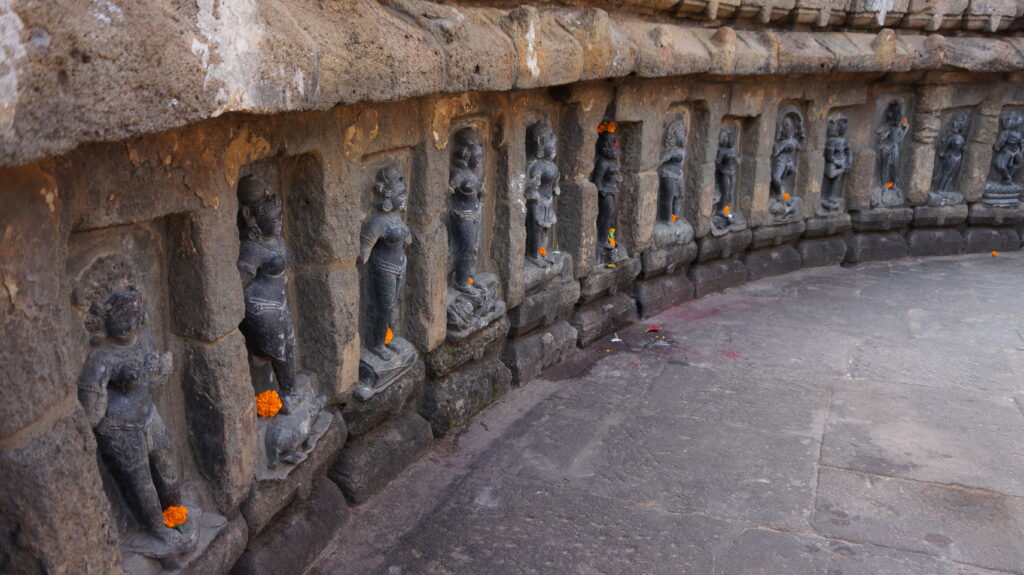
The Chausathi Yogini Temple is located in the charming village of Hirapur, which is about 15 kilometers away from Bhubaneswar in Odisha. This fascinating temple, built in the 9th century, is dedicated to 64 Yoginis, each symbolizing a different form of feminine divine energy, known as “Shakti.” Whether you’re really into history, on a spiritual journey, or just curious about cool buildings, this temple has something special for everyone.
Before we explore its amazing history and importance, let’s check out some practical information like how to get there, its distance from major transport points, and why this temple is a must-see.
How to Reach Hirapur Chausathi Yogini Temple
The Hirapur Chausathi Yogini Temple is only about a 30 to 40-minute drive away from Bhubaneswar, which is roughly 15 kilometers. This makes it a great spot for a day trip if you’re in the city. Whether you come by bus, train, or plane, getting to the temple is pretty easy.
Nearest Bus Stand: The Bhubaneswar Bus Stand at Baramunda is around 20 km from the temple. You can easily hire a taxi or auto rickshaw to Hirapur from there.
Nearest Railway Station: Bhubaneswar Railway Station is the closest, located about 17 km away. You can take a cab or auto-rickshaw to reach the temple within 30 minutes.
Nearest Airport: Biju Patnaik International Airport in Bhubaneswar is just 20 km away. A direct taxi ride from the airport will get you to the temple within 40 minutes.
A Brief Introduction to Chausathi Yogini Temples
Before we delve into the details of the Hirapur temple, it’s helpful to understand the concept of Chausathi (or 64) Yoginis. Chausathi Yogini temples are dedicated to the 64 divine feminine energies, known as Yoginis. These are not ordinary goddesses but fierce, tantric deities who were believed to embody cosmic power and protect devotees from evil. Out of the few Chausathi Yogini Temple scattered across India, the Hirapur temple stands out due to its circular design and open-air architecture.
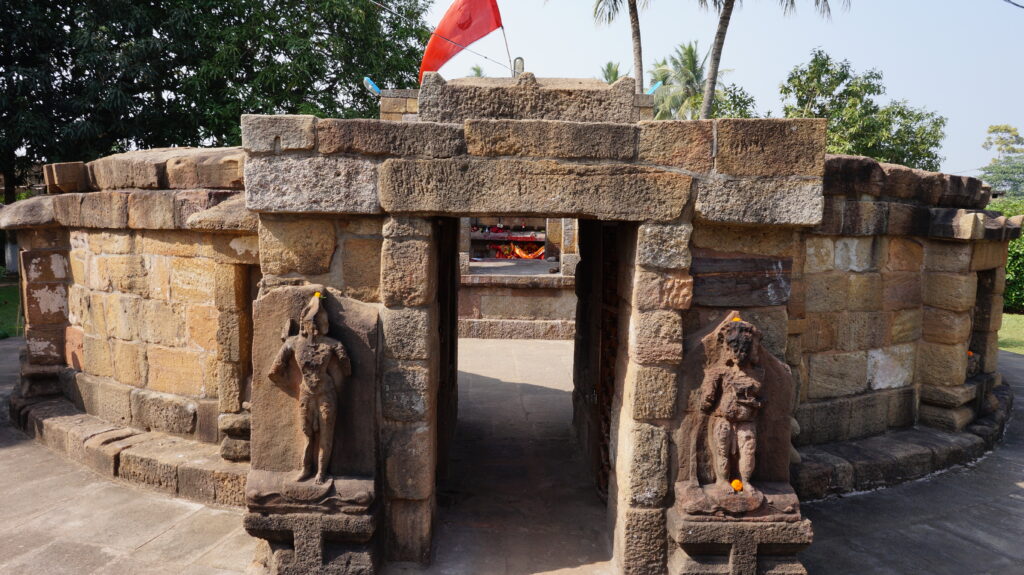
History and Architecture of the Chausathi Yogini Temple
This Chausathi Yogini Temple was built in the 9th century by the Bhauma-Kara kings. It has a unique circular shape, which is a special characteristic of Yogini temples. Unlike most temples, it doesn’t have a roof. This open design is thought to represent the link between the worshippers and cosmic energies, allowing the powers of the Yoginis to connect freely with the universe.
The Mystical 64 Yoginis: Who Are They?
The Chausathi Yogini Temple is made of sandstone and is about 25 feet wide. Inside, there are 64 niches, each containing a different Yogini statue. The Yoginis are shown in various poses, holding different weapons, and sometimes they are shown with animals. In the center of the temple is the main deity, Goddess Kali, who is located in the middle of the sanctum. Many experts think that the lack of a roof indicates that the temple was originally used as a tantric shrine for special rituals that took place at night under the moonlight.
The 64 Yoginis, or Chausathi Yoginis, are fierce goddesses that represent the powerful forms of Shakti (feminine divine energy). Each Yogini is associated with a specific power or element of the natural world. Here are a few of the prominent Yoginis you’ll encounter at the temple:
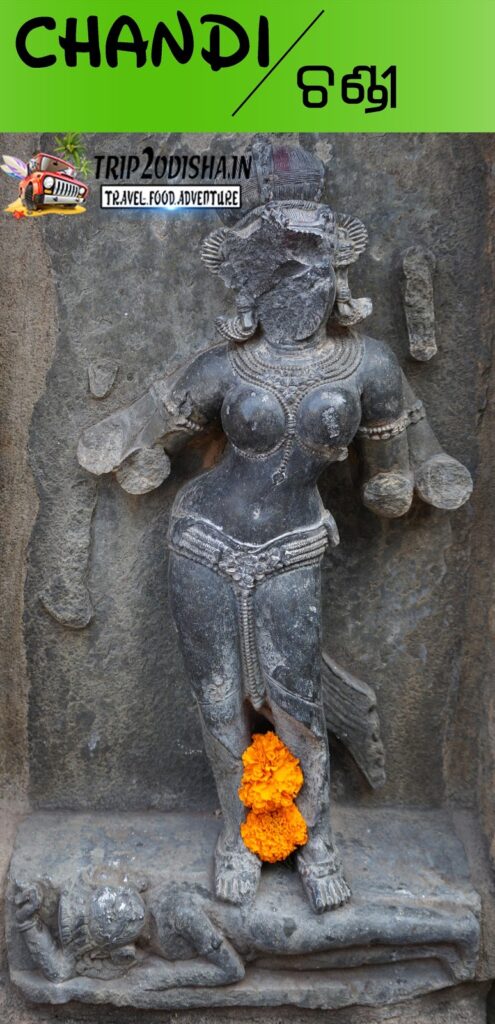
Yogini No.1 (Name: Chandi)
Four armed, standing in tribhanga pose on a corpse lying straight. Braid of hair over her head. She is adorned with ornaments like armlets, anklets necklaces and Kappa.
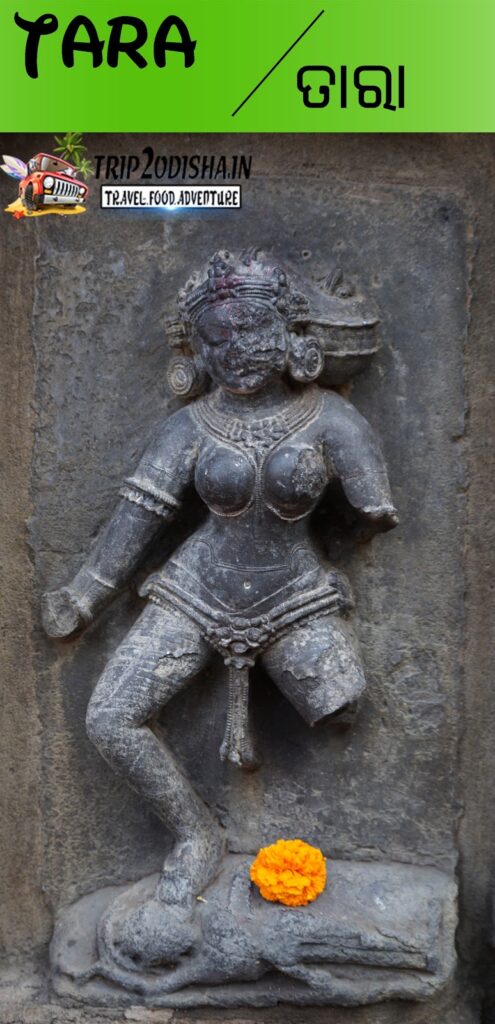
Yogini No.2 (Name: Tara)
Two armed, mounted on a corpse in bent knee pose, braid of hair to the left known as kesabandha. Various ornaments for the head and other ornaments are like Yougini No. 1.
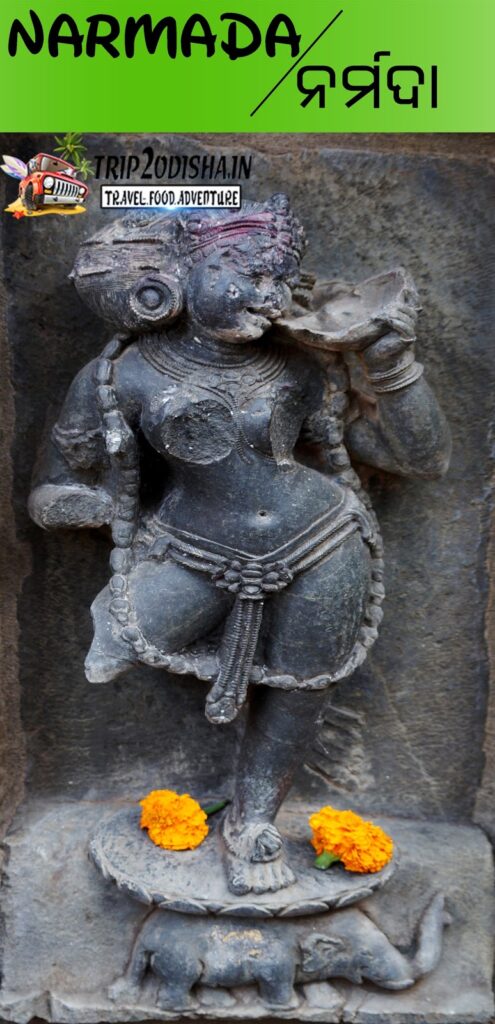
Yogini No.3 (Name: Narmada)
Two armed, Stand on an elephant and wear a garland of skulls and various ornaments. She holds a skull cup (kapala) near her mouth believed to be drinking blood. The braids of hair are to the right of her head.
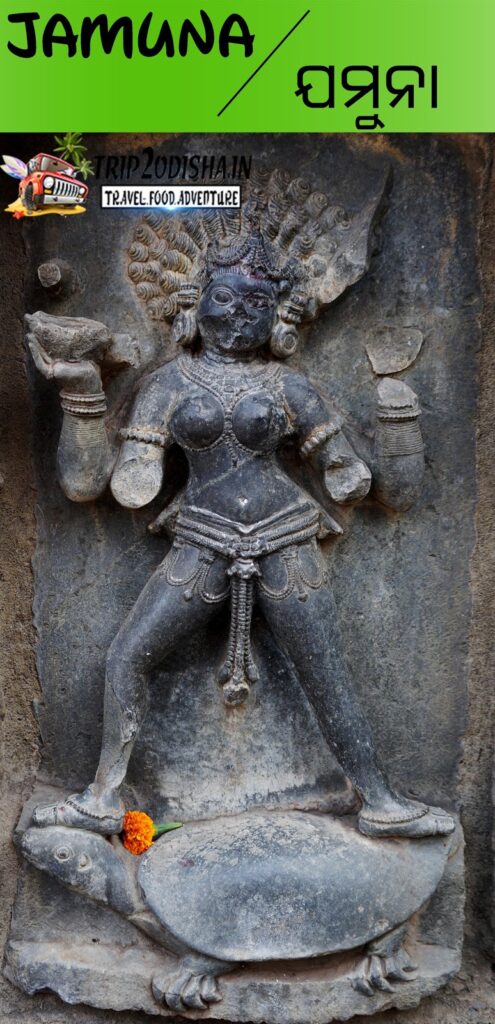
Yogini No.4 (Name: Jamuna)
Four armed, Standing in Pratyalidha pose. The mount is a big tortoise. Her curling hair is raised over the head. known as Jatamandala. A skull cup (kapala) is seen in the upper right hand.
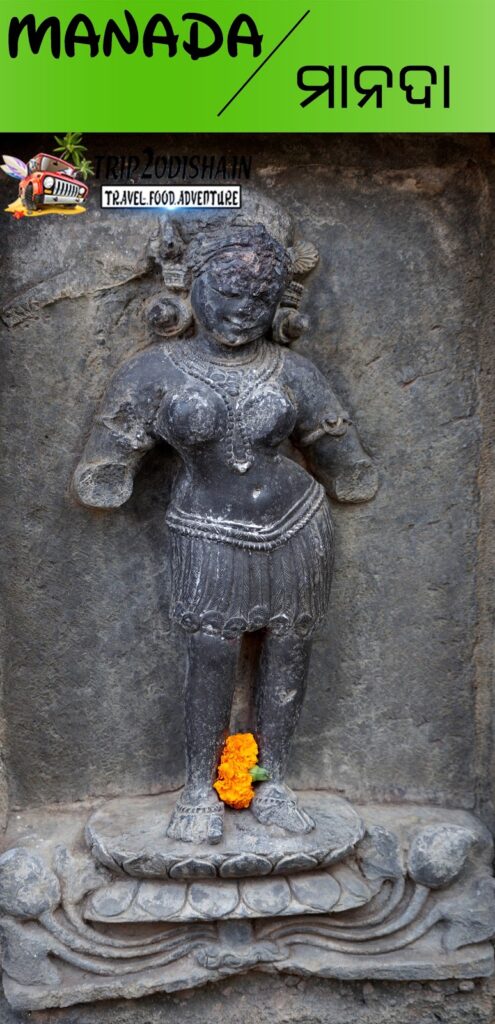
Yogini No.5 (Name: Manada)
Two armed, standing on a full-blown lotus. Braid of hair over the head. Ornaments like Yogini No.-1 with nagakeyura.She is wearing Pea-Cock feather skirt.
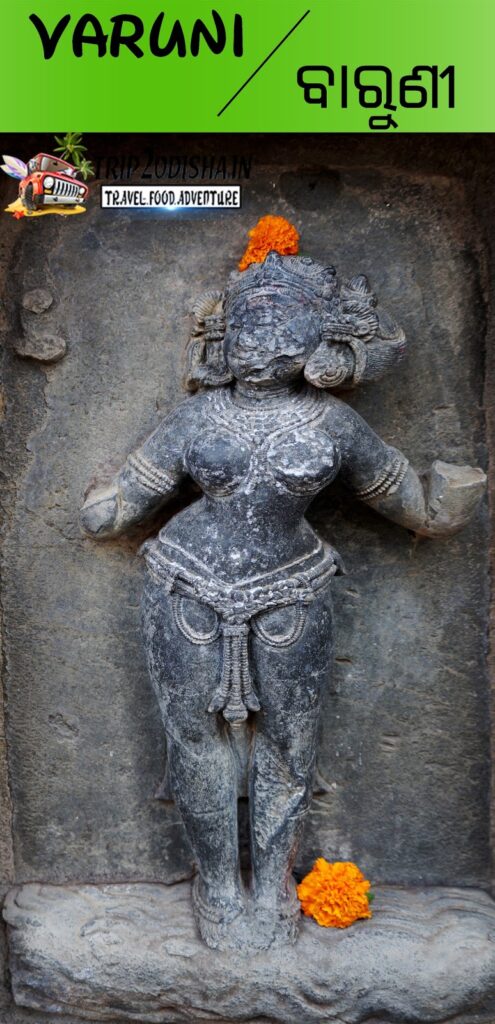
Yogini No.6 (Name: Varuni)
Two armed. The braid of her hair is to the left of her head. There are lines of waves on the pedestal. She is adorned with some ornaments the head and the body. She is standing in a Samabhanga Pose.
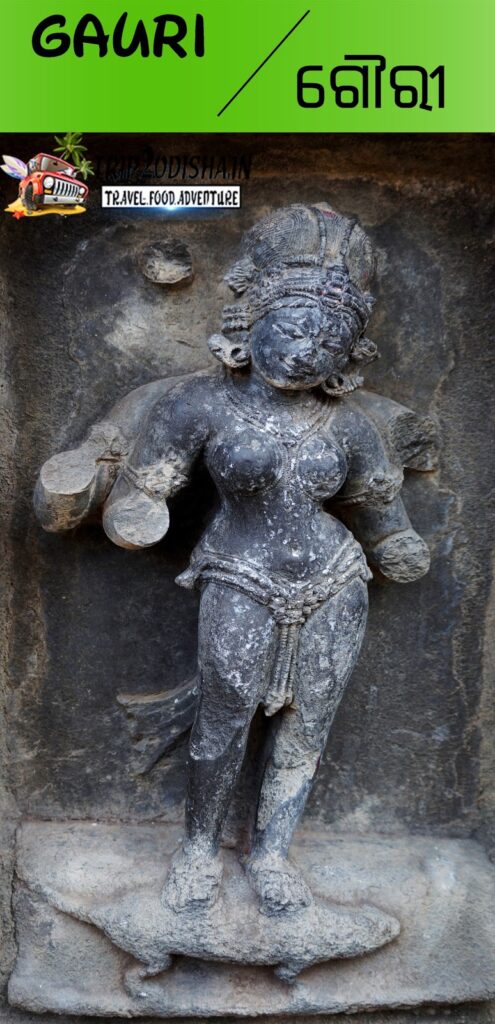
Yogini No.7 (Name: Gouri)
Four armed, standing on an alligator. Braid of hair over her head i.e. chignon on top. She wears a girdle, necklace, armlets, anklets and various ornaments on the head. She is standing in a Samabhanga Pose.
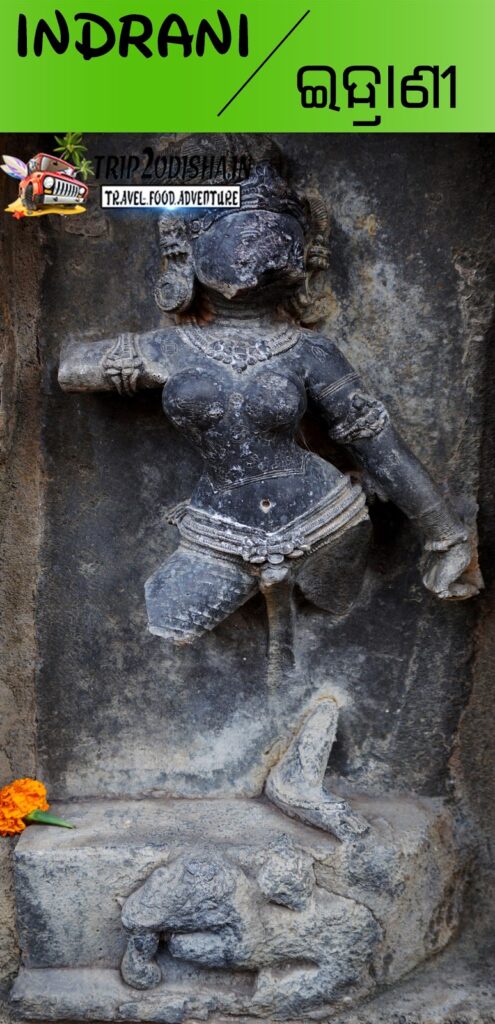
Yogini No.8 (Name: Indrani)
Two armed, mounted on an elephant. Braid of hair over her head i.e. chignon on top. She is having various ornaments on the head and the body. She is standing on a Pratyalidha Pose.
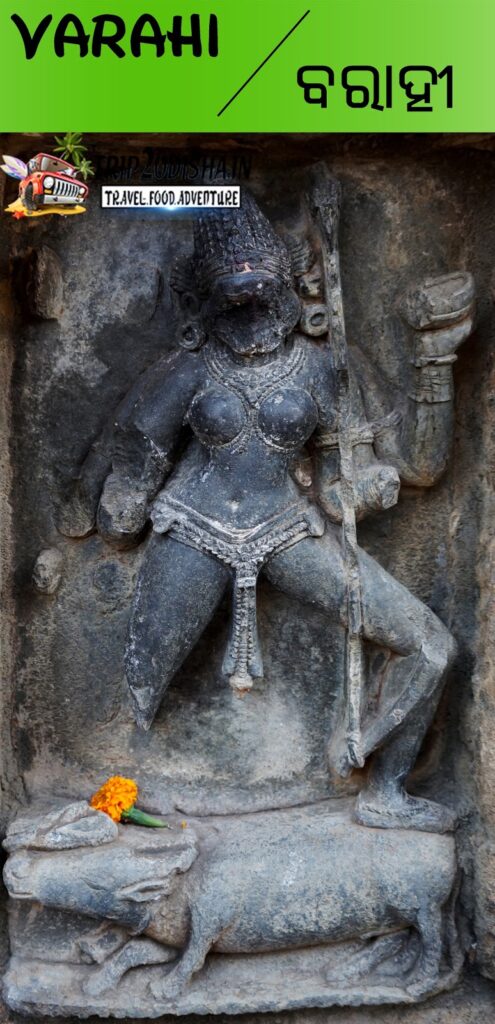
Yogini No.9 (Name: Varahi)
Four armed with the face of a boar mounted on a buffalo. Ornaments are like Yogini no.1 with mukuta and kirita. She holds a skull cup and bow.
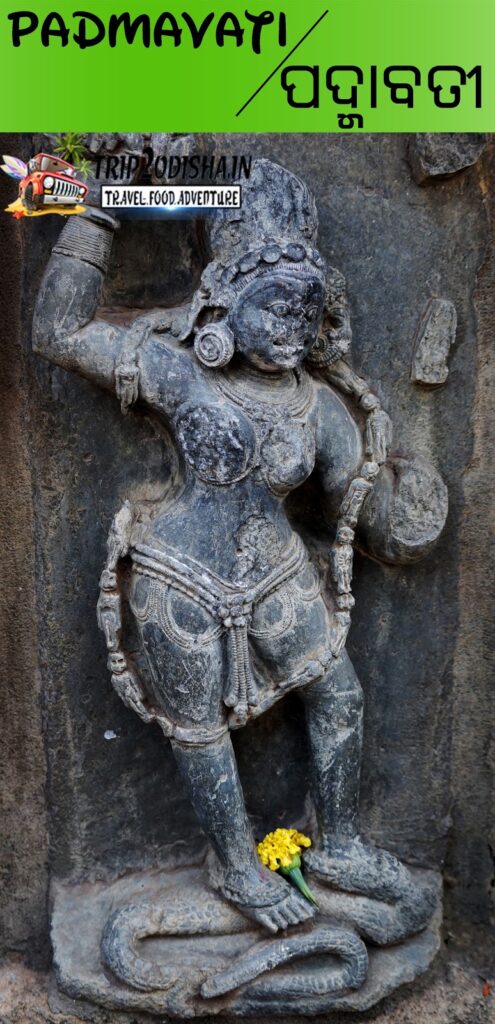
Yogini No.10 (Name: Padmavati)
Two armed fierce looking, standing on the hood and body of a serpent. Her braid of hair is over her head. She is adorned with a garland of skulls and alaka. She holds a khadga in her right hand.
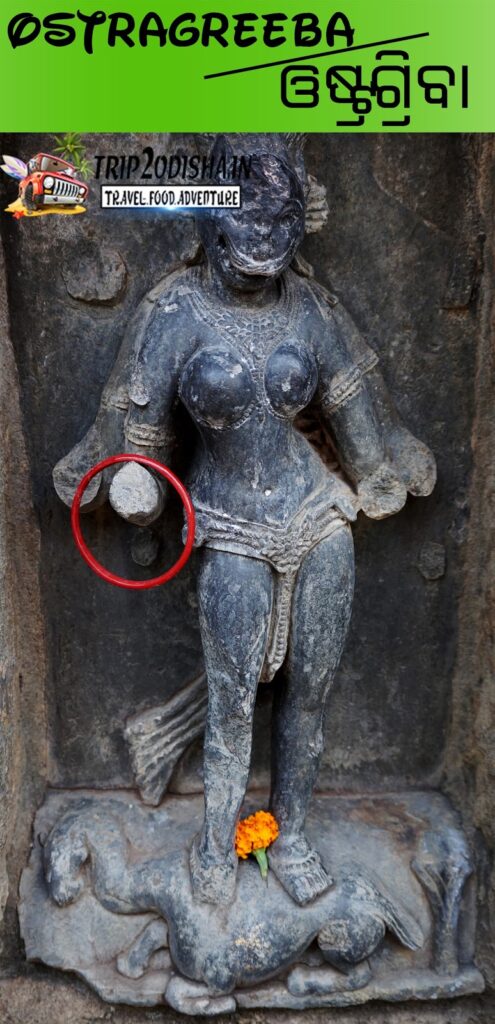
Yogini No.11 (Name: Ostagreeba)
Four armed, monkey-faced. There is a camel with a curling long neck on the pedestal as the mount. She is standing in a Dvibhanga Pose.
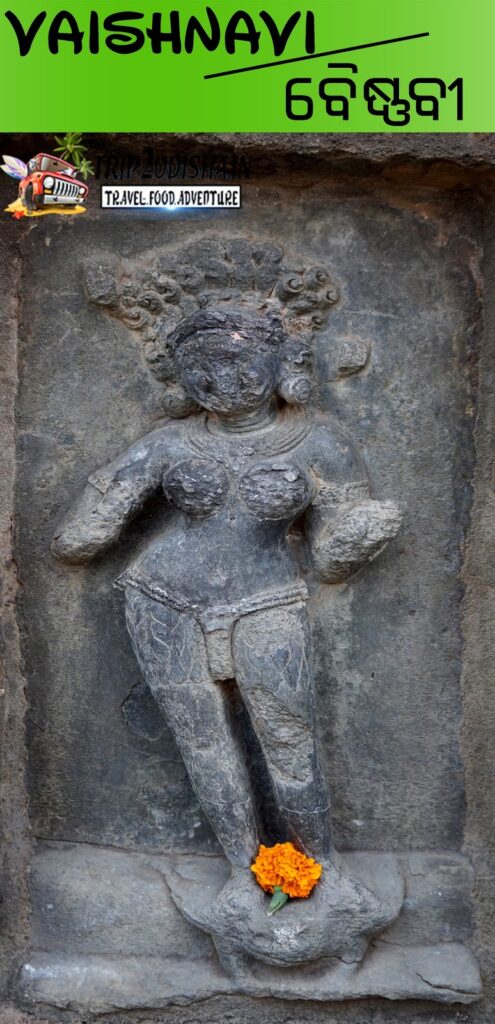
Yogini No.12 (Name: Vaishnavi)
Two armed, graceful faces, with curling hair and Sarpa Mukuta over her head and She wears usual ornaments. Garuda as her mount establishes her as Vaishnavi.
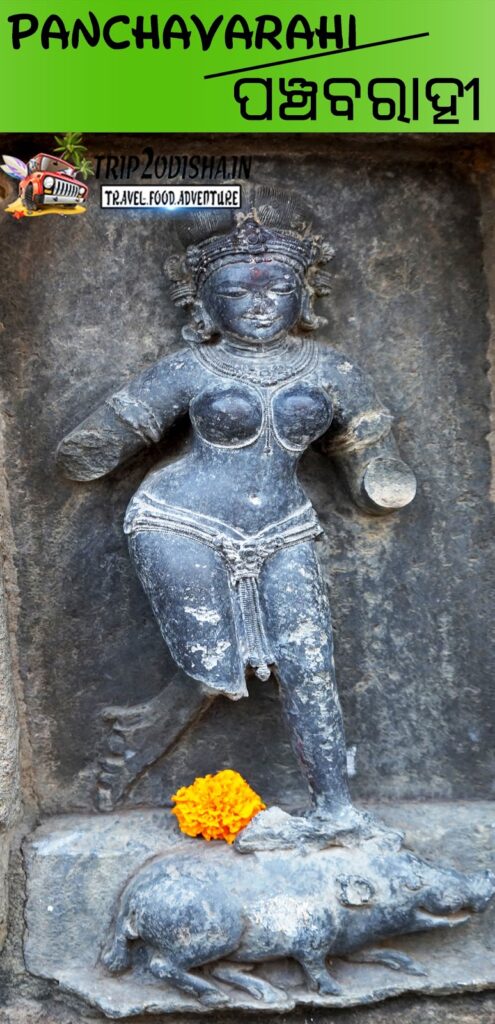
Yogini No.13 (Name: Panchavarahi)
An armed, graceful figure, a beautiful braid of hair over her head and her mount is a boar. She is standing in a Tribhanga Pose with smiling face.
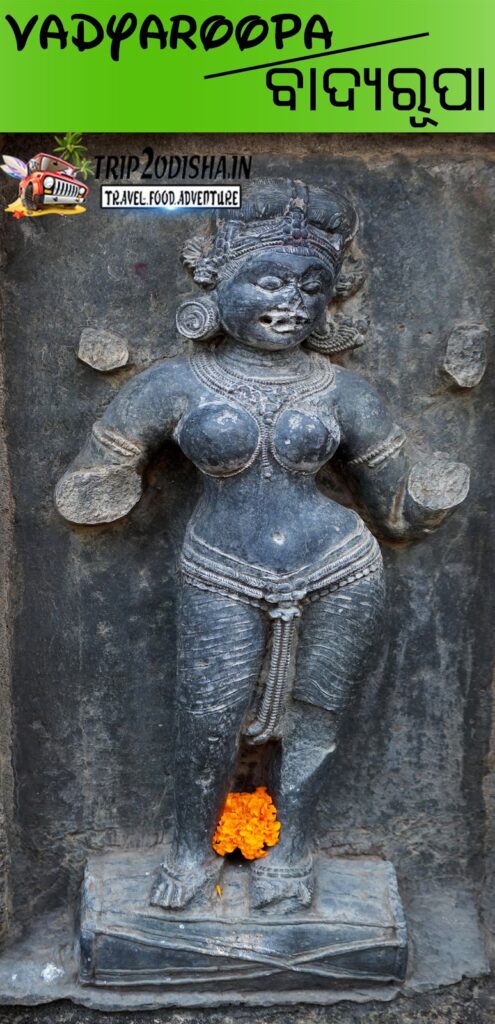
Yogini No.14 (Name: Vadyaroopa)
Two armed figure with braid of hair over her head. She stands in a Dvibhanga pose on a drum.
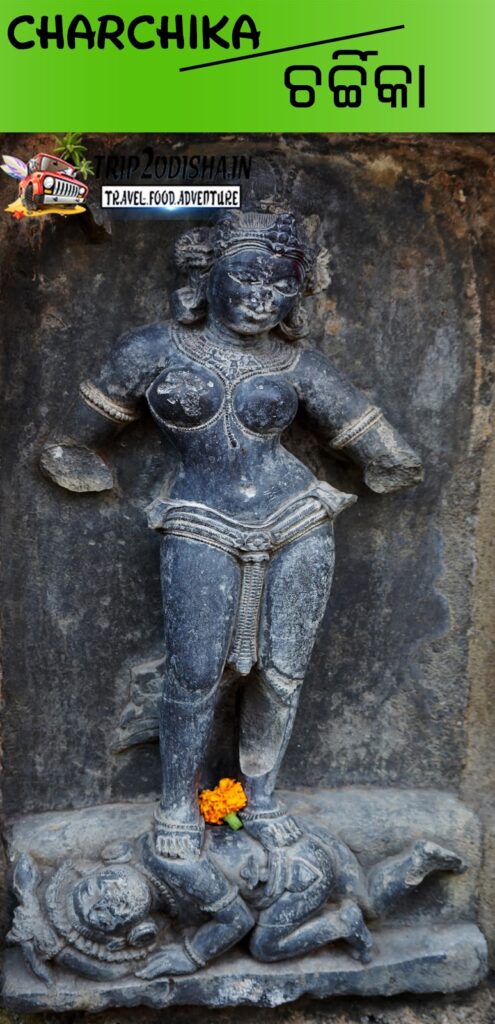
Yogini No.15 (Name: Charchika)
Two armed figure. The mount is a male figure. The male figure is having curling hair who holds the stem of a lotus in his right hand. She is standing in a Tribhanga pose.A Katari (dagger) is seen on the waist of the leaning male figure.
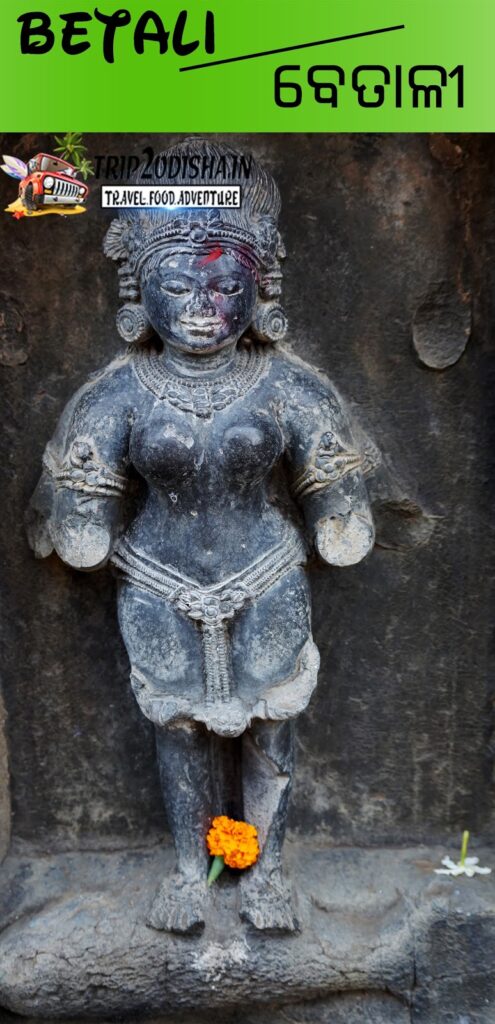
Yogini No.16 (Name: Betali)
Four armed figure. She mounts on a fish and braid of hair over her head. She is having a garland of skulls with ornaments like Yogini No.1. She is standing in a Samabhanga Pose.
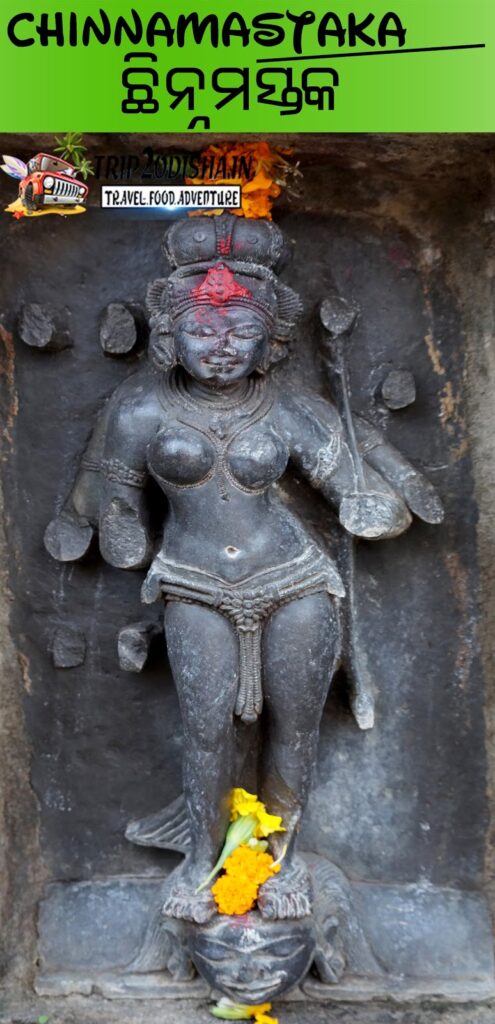
Yogini No.17 (Name: Chinamastaka)
Four armed figure with the mount as severed head. Braid of hair over her head i.e. chignon on top. She holds a bow in her lower left hand. She is standing in a dvibhanga pose.
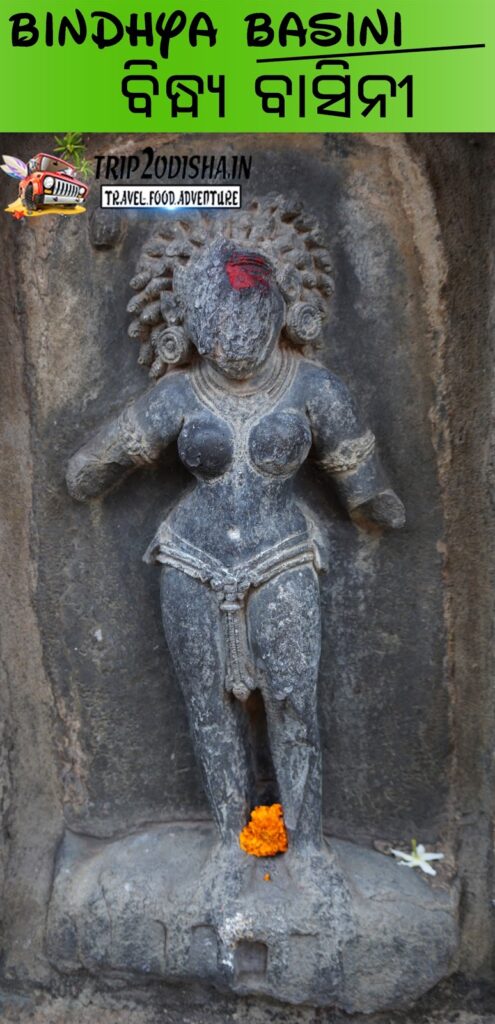
Yogini No.18 (Name: Bindhya Basini)
Two armed figure. Mount is like a flat roofed house or cave with a hole in the middle. Her face is a buffalo head with fierce look and dishevelled hair known as jatamandal.
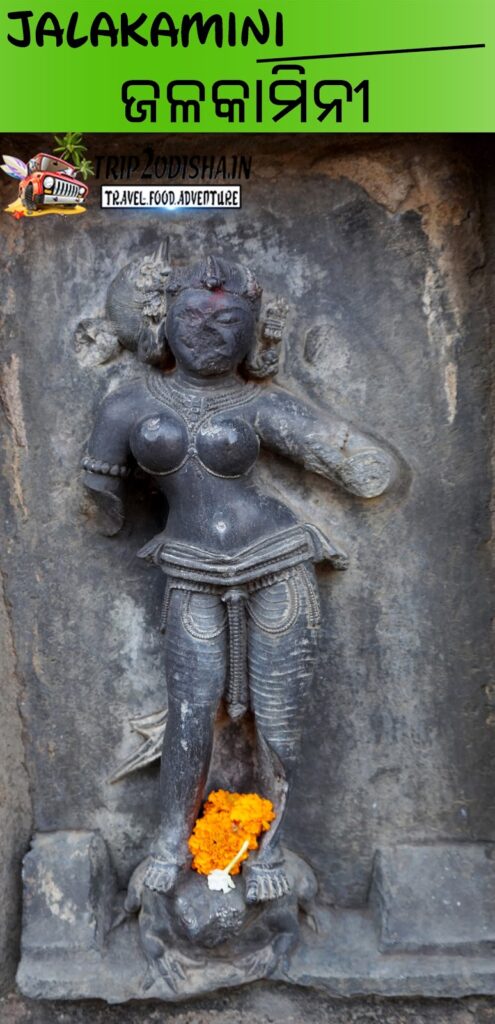
Yogini No.19 (Name: Jalakamini)
Two armed figure, mounting on a big frog, beautiful braid of hair to the right side of the head. Her waist ornaments and clothing are quite decorative. She is standing in a Tribhanga pose.
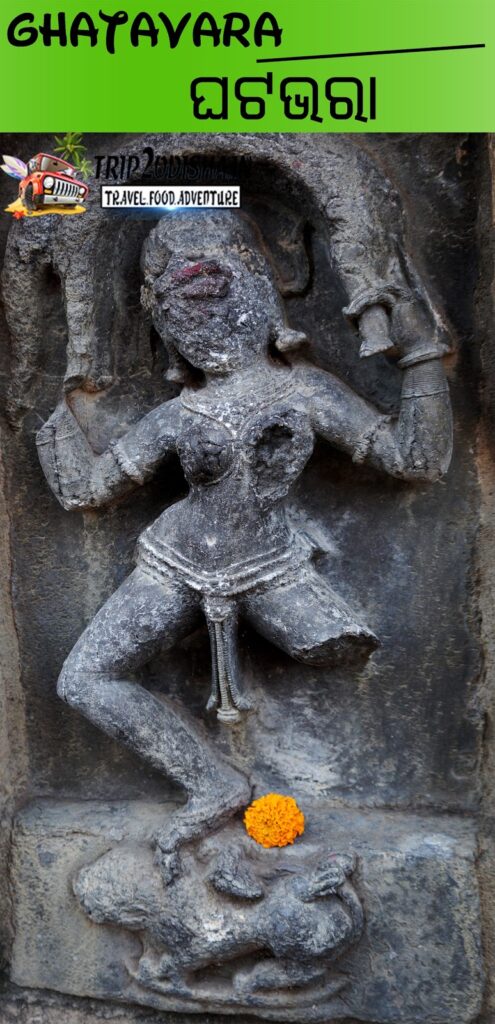
Yogini No.20 (Name: Ghatavara)
Two armed terrific figure mounting on a lion. She lifts and elephant hide over her head. She is in a dance pose.
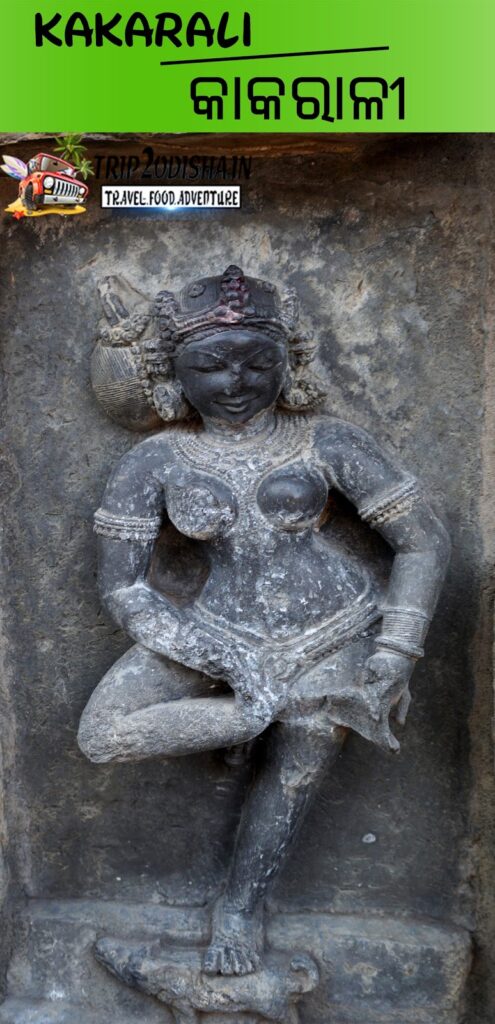
Yogini No.21 (Name: kakarali)
Two armed graceful figure, mounted on a dog with braid of the hair to the right. Her right foot is held tightly by both of her hands and placed over her left thigh. It seems she adjusts her anklets.
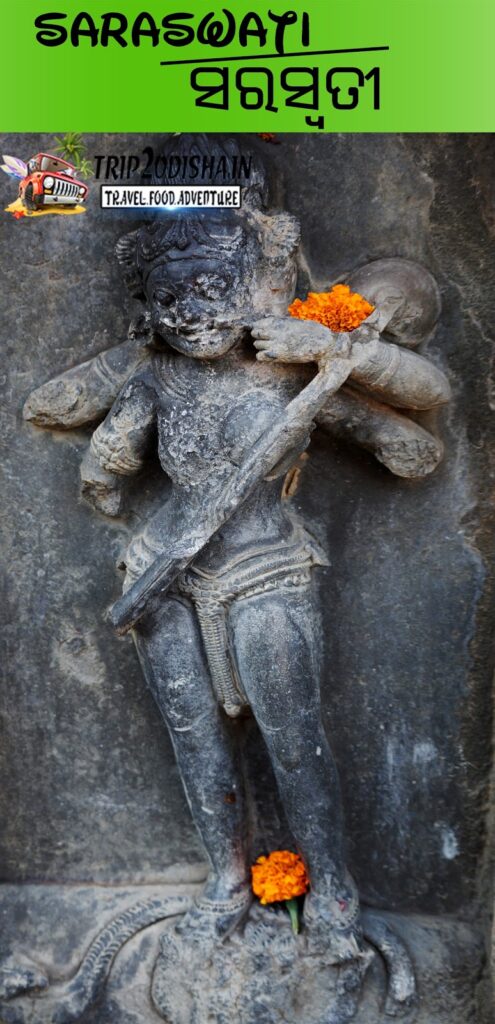
Yogini No.22 (Name: Saraswati)
Standing upon a big serpent she is a four armed figure. She has got moustache and seen twisting the same. From her shoulder a tumuru is hanging.
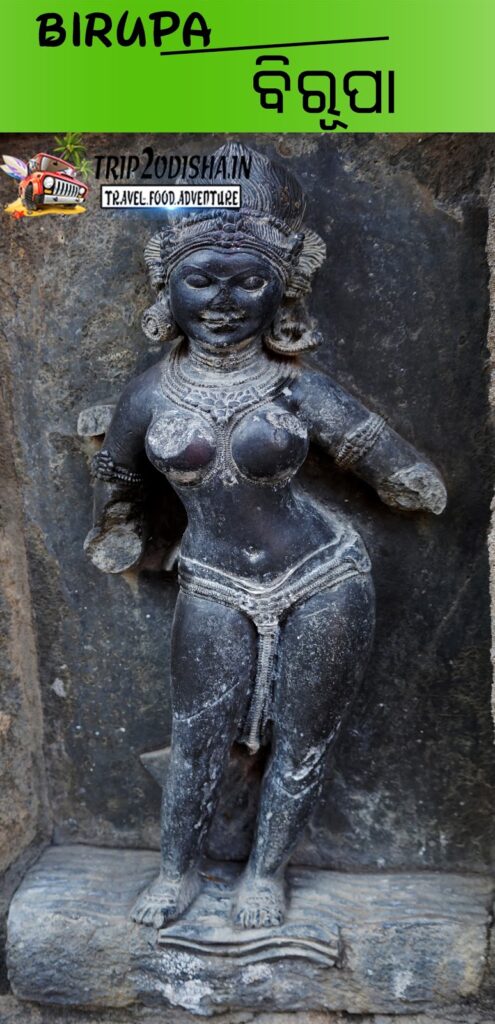
Yogini No.23 (Name: Birupa)
Two armed figure. Braid of hair over the head. In the pedestal there are lines of waves on which she stands. She is standing in dvibhanga pose.
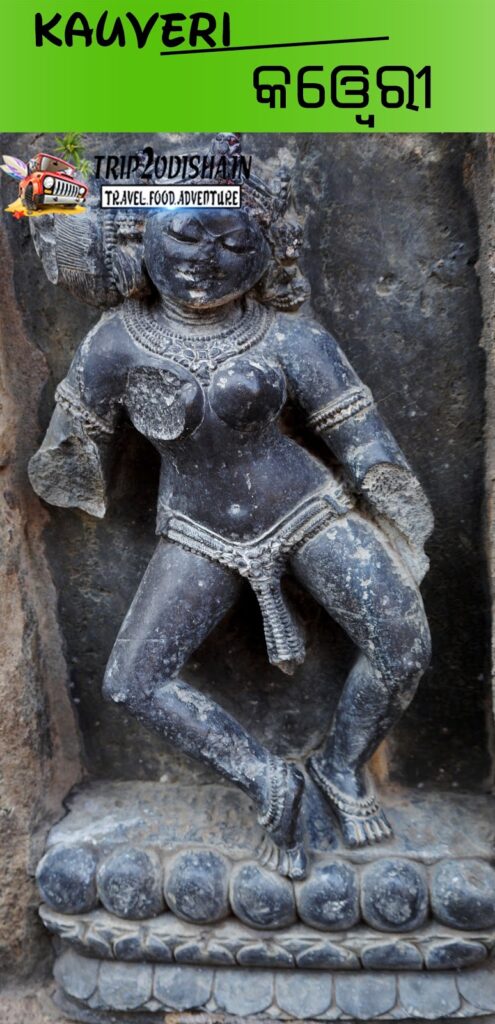
Yogini No.24 (Name: Kauveri)
Two armed figure with seven ratna kalasas or Ratnanidhis on the pedestal. The Ratna Kalasas are placed over a full blown lotus on which she stands. Braid of hair to the right with mukuta and kirita over her head. With the usual ornament she wears a bejeweled girdle. She is in a dance pose.
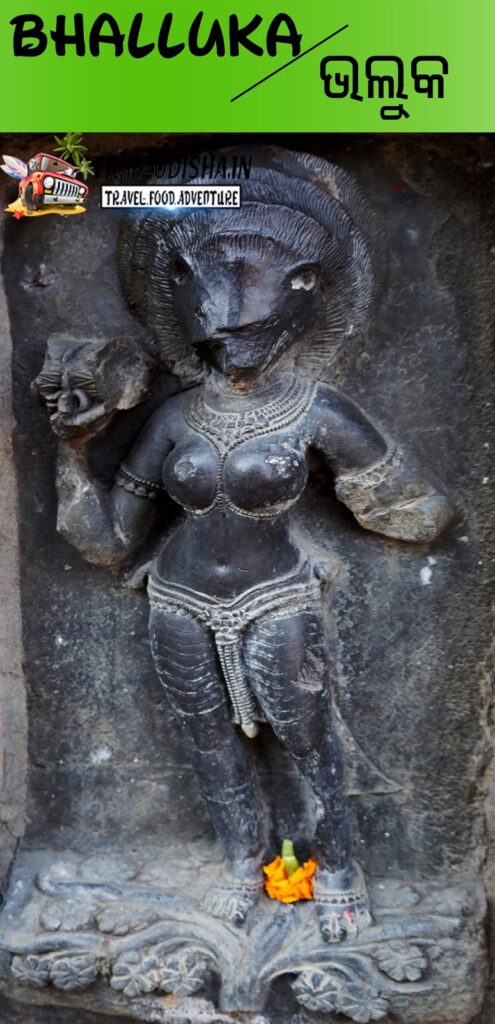
Yogini No.25 (Name: Bhalluka)
Two armed boar faced figure with raised hair. There is a padma lata on the pedestal. She wears various ornaments and holds a damru in her right hand. Her hairstyle is known as jatamandala.
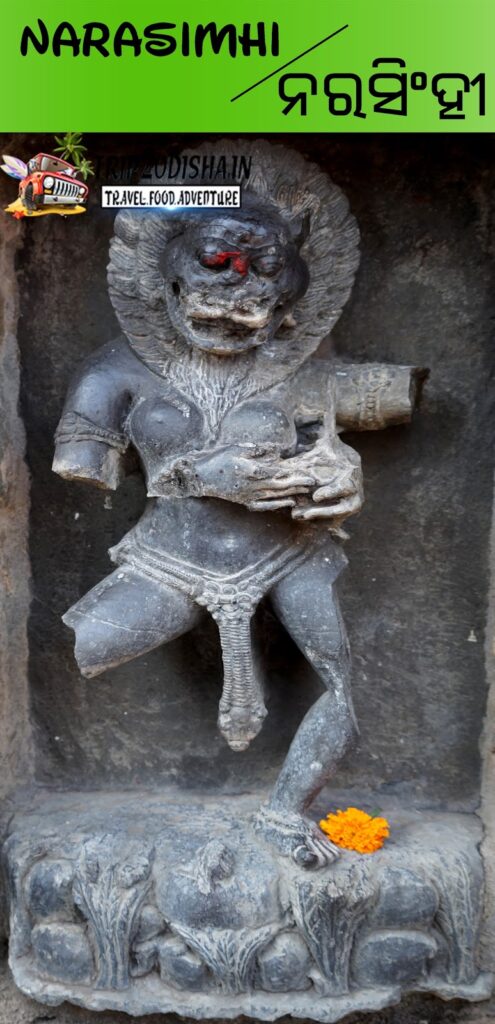
Yogini No.26 (Name: Narasinghi)
Four armed lion faced figure. Like mane of the lion there is raised curling hair. There is a pot like thing in her lower hands. There are five flowers with leaves on the pedestal. Her hairstyle is known as jatamandal.
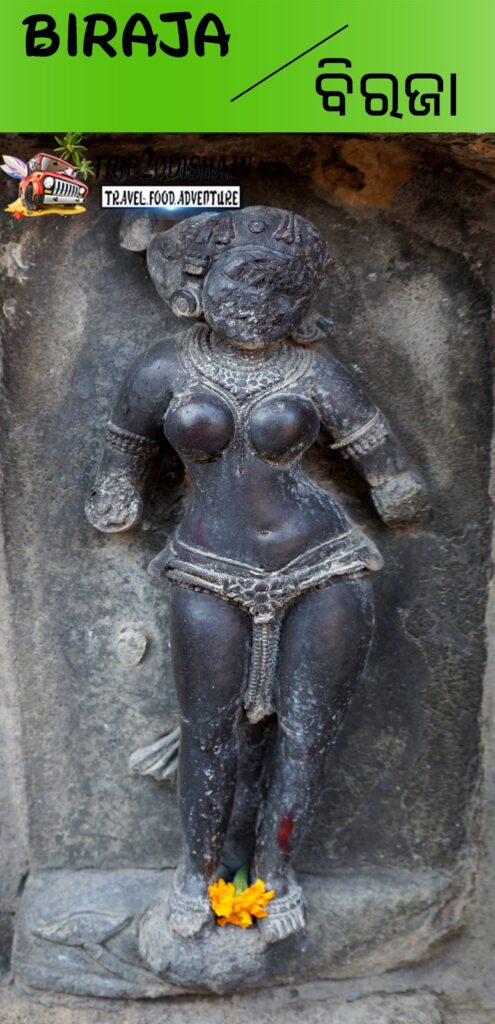
Yogini No.27 (Name: Biraja)
Two armed graceful figure with braid of hair to the right, mounted on a lotus bud with leaves. Braid of hair to the right. She is standing in a dvibhanga pose.
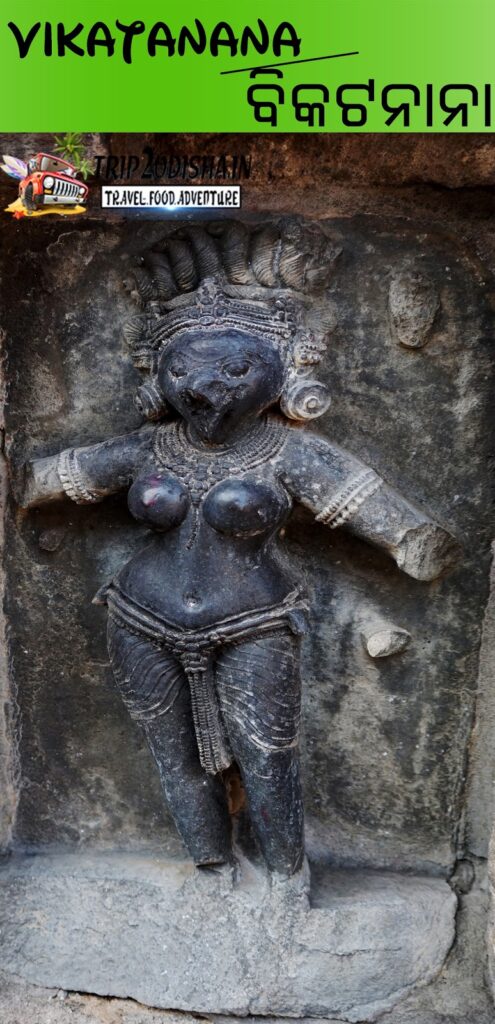
Yogini No.28 (Name: Vikatanana)
Two armed furious figure with protruding lips and curling matted hair over her head. She is having Sarpa Mukuta type of hair style.
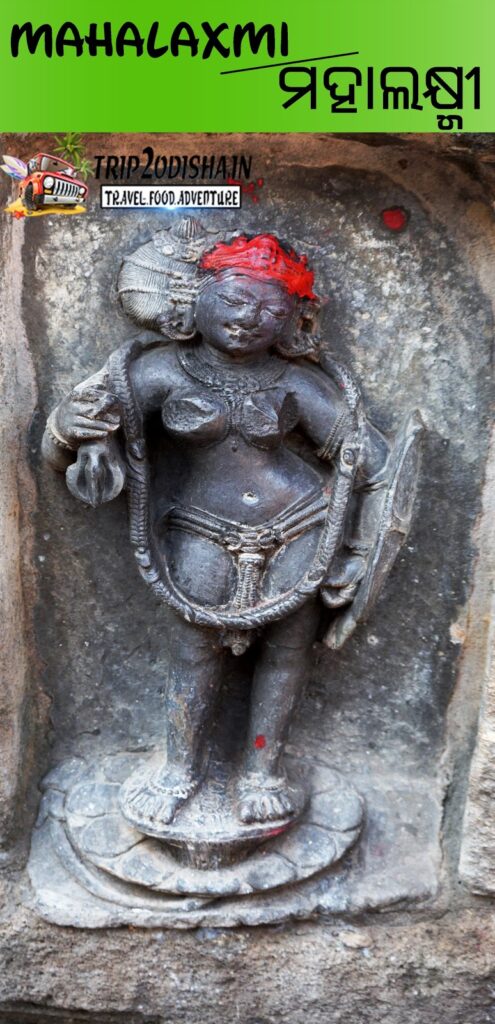
Yogini No.29 (Name: Mahalaxmi)
Two armed. Beautiful figure mounted on a full blown lotus. She wears a garland of snakes and holds vajra (Thunder Bolt) and a shield in both of her hands. Her braid of hair is at her right side.

Yogini No.30 (Name: Kaumari)
Two armed graceful figure mounting on a peacock. There is akshamala on her right arm. Like usual ornaments she wears necklace, girdle and anklets. The shield of the left hand is broken. She stands in dvibhanga pose. Her braid of hair is at her right.
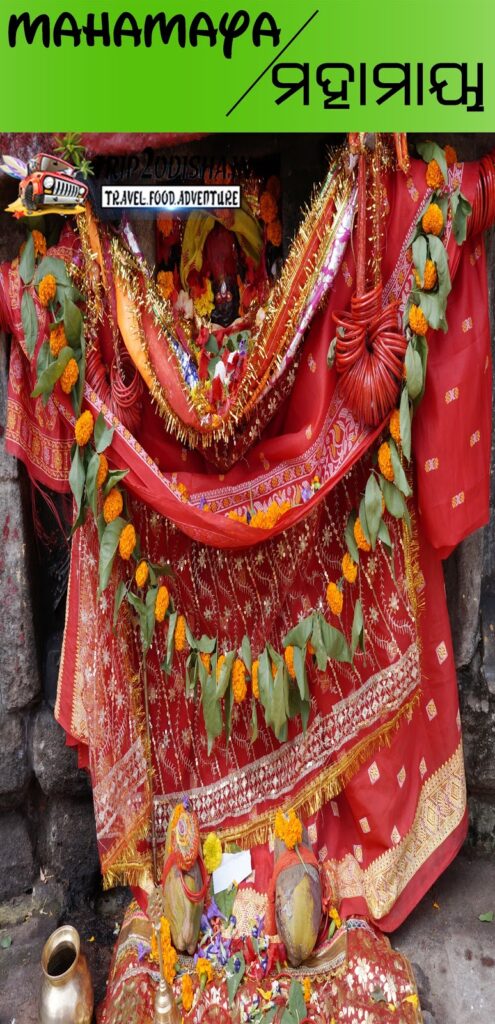
Yogini No.31 (Name: Mahamaya)
A ten armed graceful figure and slightly bigger then the rest of the yogini present here. She is mounted on a full blown lotus. A squarish Shakti Pitha is placed below her feet on the ground. She wears mukuta and kirita with a beautiful necklace, bejeweled girdle anklets and armlets. The yogini image is worshipped as the presiding deity of the shrine. The locals call the temple as Mahamaya temple and the ancient tank situated at the southern side of the temple is known as Mahamaya Puskarini.
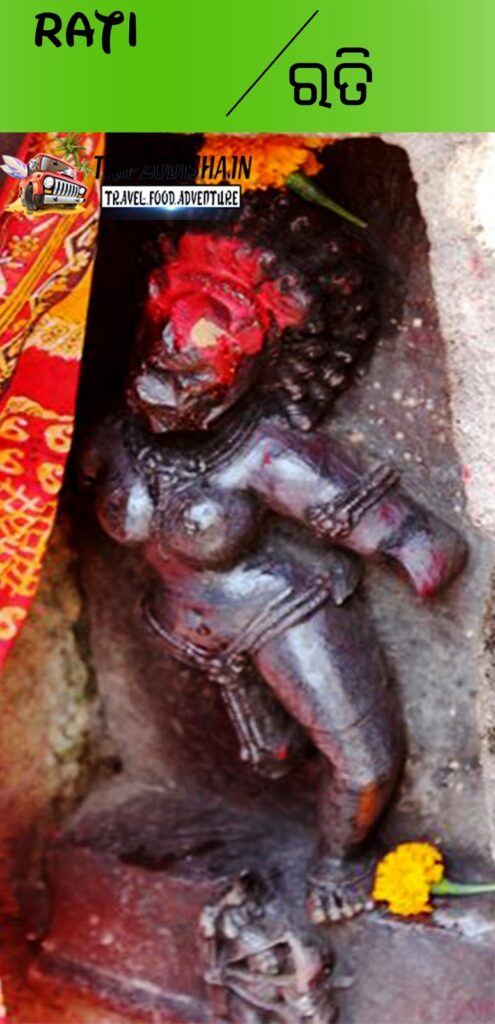
Yogini No.32 (Name: Rati)
Two armed figure with furious face and raised curling hair known as jatamandala. Standing in a bent knee pose. In the pedestal there is an archer with bow and arrow in both hands and quiver on the shoulder.
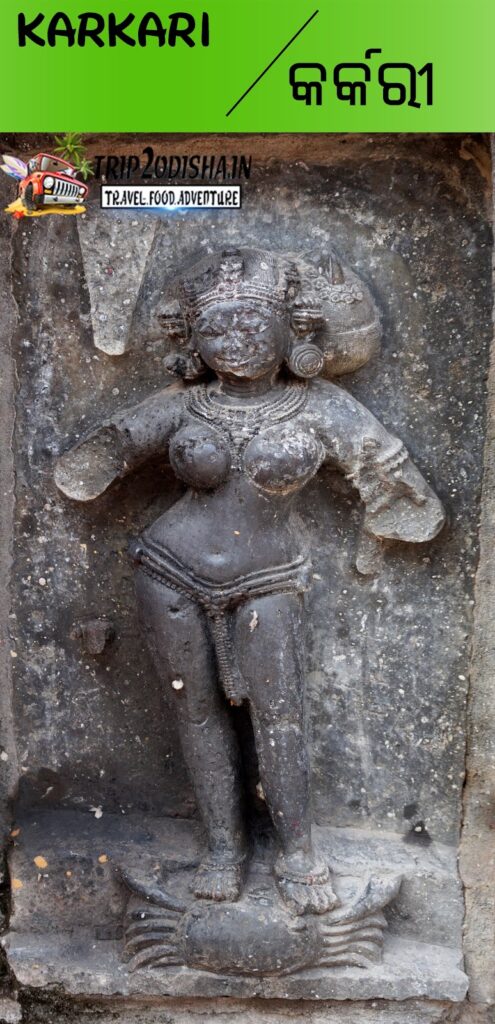
Yogini No.33 (Name: Karkari)
Two armed graceful figure. The mount of the Yogini is a crab. Her braid of hair is to the left of her head known as kasa-bandha. There are head ornaments, ear ornaments, girdle and necklace. She is standing in a tribhanga pose.
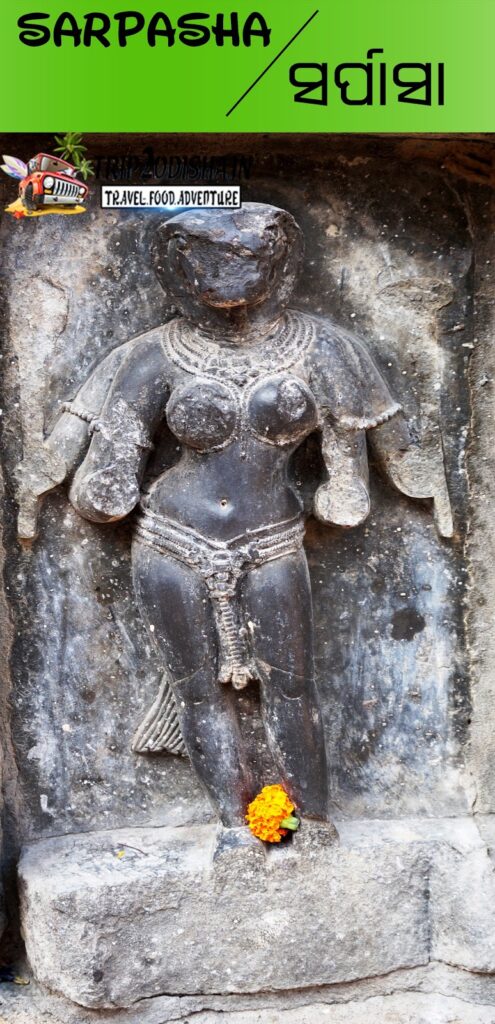
Yogini No.34 (Name: Sarpasha)
Four armed. Snake faced with various ornaments. The pedestal is broken for which no mount is seen here. She is standing in a dvibhanga pose.
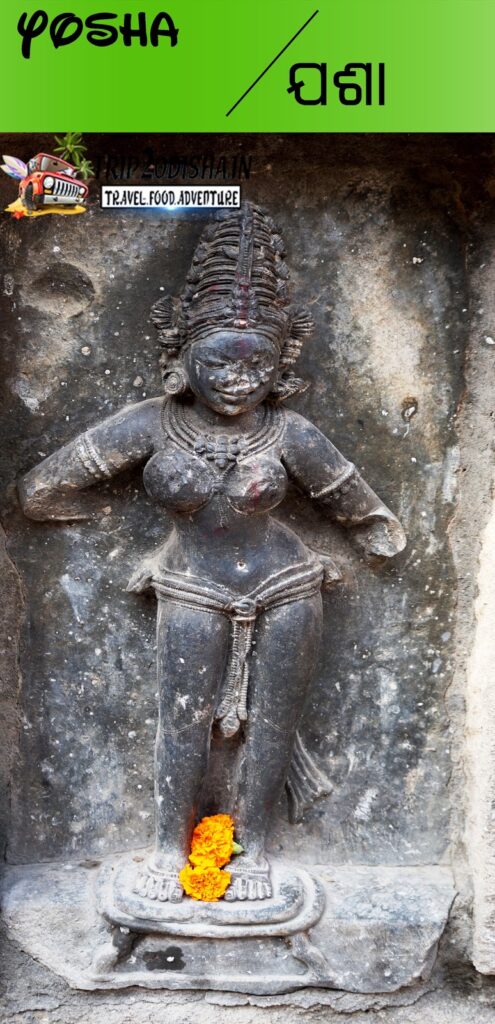
Yogini No.35 (Name: Yosha)
Two armed figure and the mount is a cot with four legs. There are kirita and mukuta over her head known as jatamandala. She is standing in a tribhanga pose.
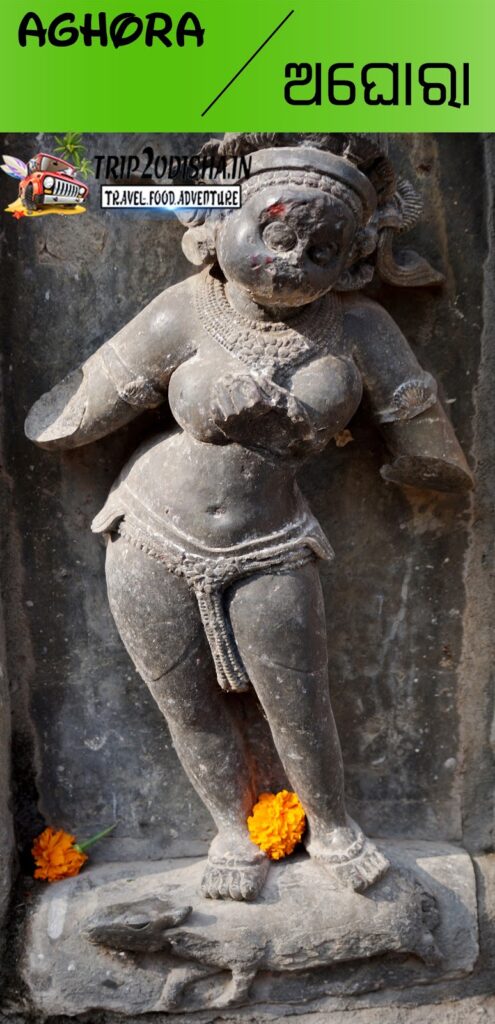
Yogini No.36 (Name: Aghora)
Two armed figure with a furious look with bulging eyes. The mount is a horned goat like animal. Her hair is raised over her head. She is standing in a dvibhanga pose.
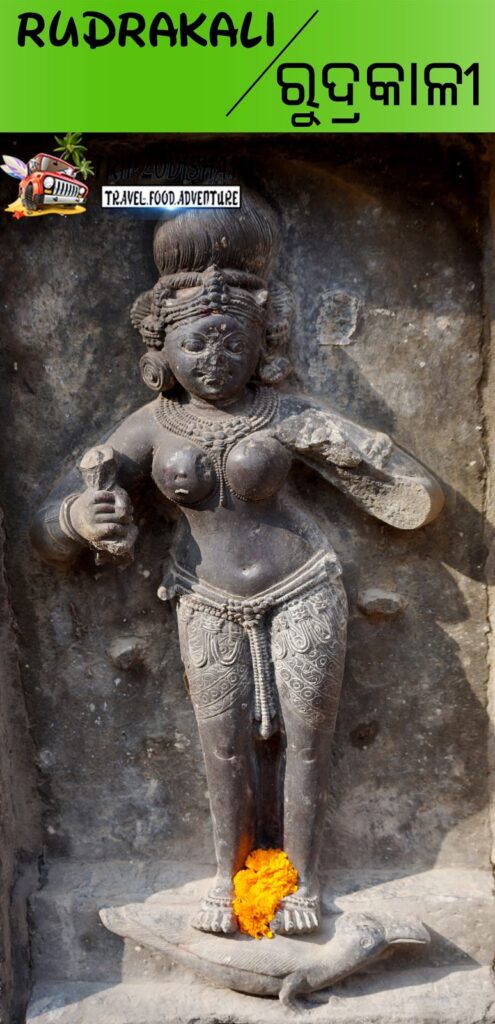
Yogini No.37 (Name: Rudrakali)
Two armed figure mounting on a crow. Braid of hair over her head looks like flame. There is a sword in her sight hand. The cloth she wears is with intricate designs. She is standing in a Samabhanga pose.
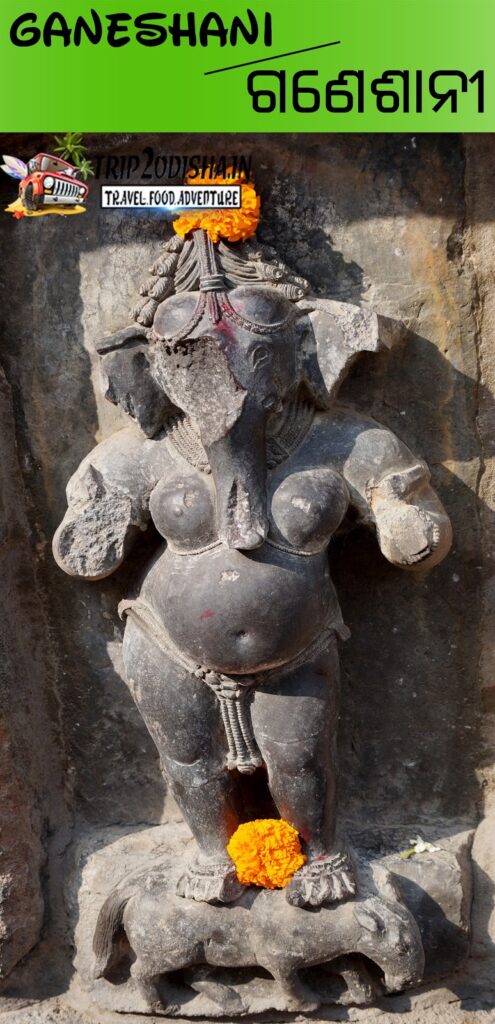
Yogini No.38 (Name: Ganeshani)
Two armed elephant faced potbelly figure. The mount is an ass. There is jata-juta (knot of matted hair) or jatamukuta over her head.
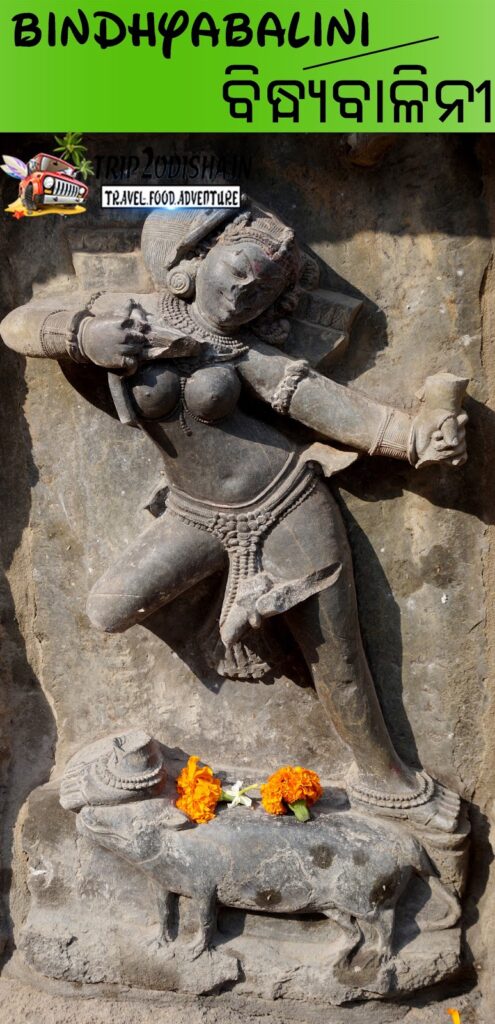
Yogini No.39 (Name: Bindhyabalini)
Two armed figure mounting on a rat, beautiful braid of hair to the right of her head. She is having bow in left hand and bow string on the night hand seems dispensing arrow. She is standing in a Pratyalidha pose.
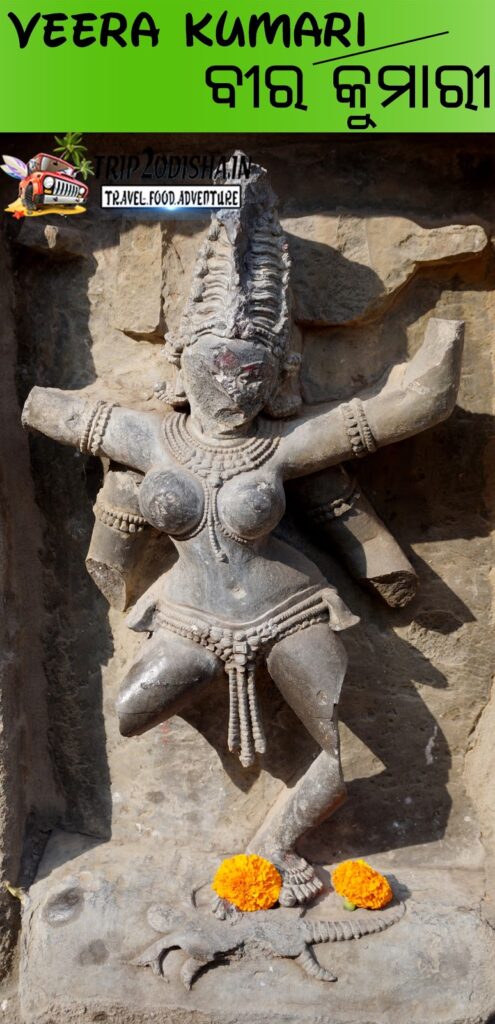
Yogini No.40 (Name: Veera kumari)
Four armed beautiful figure mounting on a scorpion she is having jatamukuta over her head and various ornaments on the body her upper hands are raised. She is standing in a dance pose.
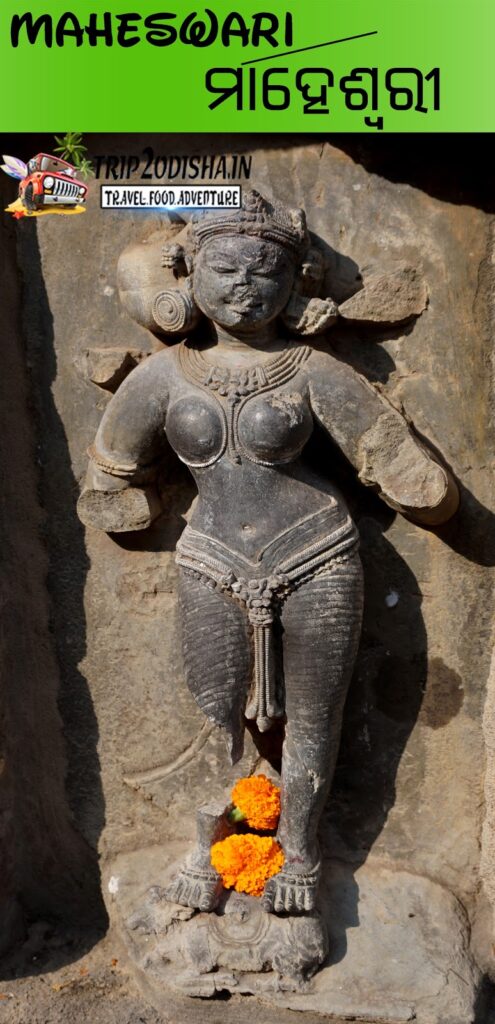
Yogini No.41 (Name: Maheswari)
Four armed figure mounting on a bull. Braid of hair is to the right known as kesabandha, adorned with various ornaments. She is standing in a dvibhanga pose.
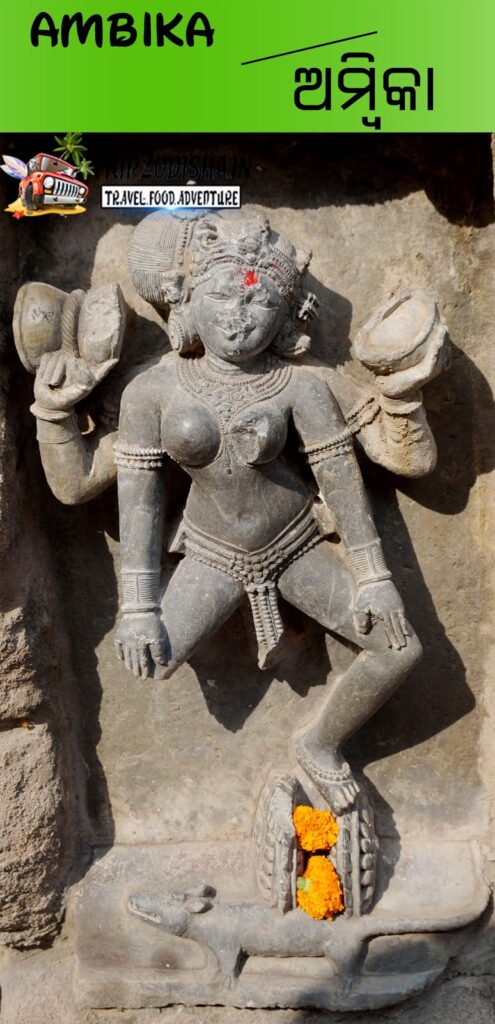
Yogini No.42 (Name: Ambika)
Four armed figure with two wheels as the mount below which there is a mongoose. Braid of hair is to the right. Her two lower hands lean against both the knee joints as she is in a bent knee pose. She holds a damru in her upper right hand.
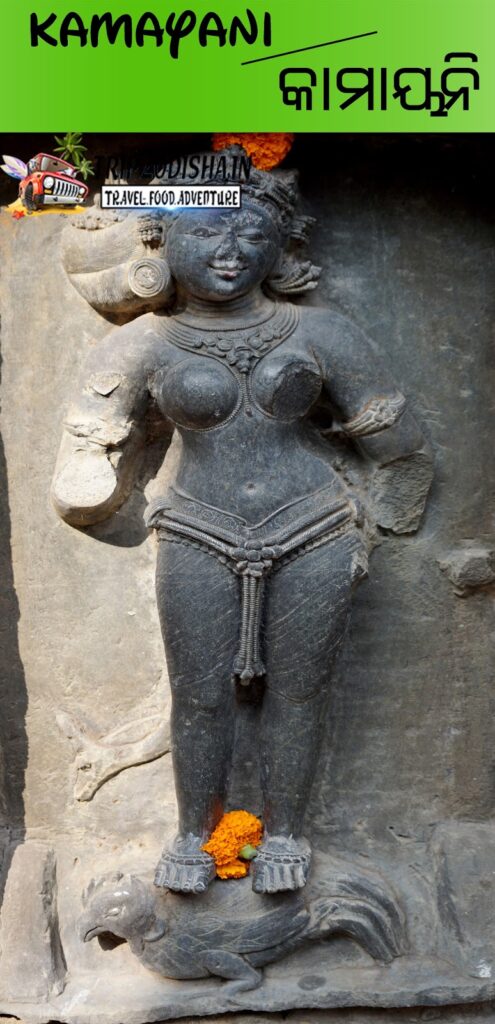
Yogini No.43 (Name: Kamayani)
Two armed figure. There is a cock in her pedestal she is adorned with various ornaments. Braid of hair is to be right side. Known as kesabandha.She is standing in a dvibhanga pose.
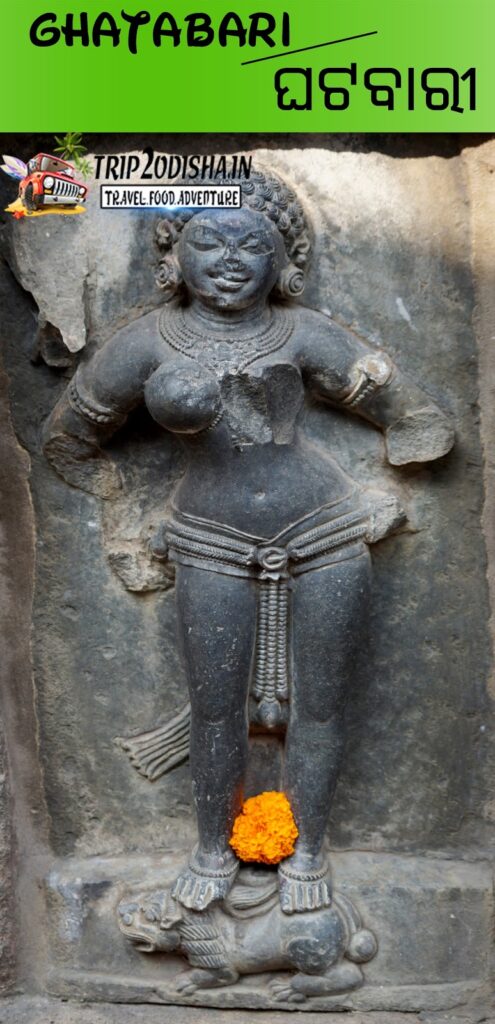
Yogini No.44 (Name: Ghataari)
Two armed figure mounting on a lion. She has curling hair over her head with various ornaments. Known as Karanda-Mukuta. She stands in a dvibhanga pose.
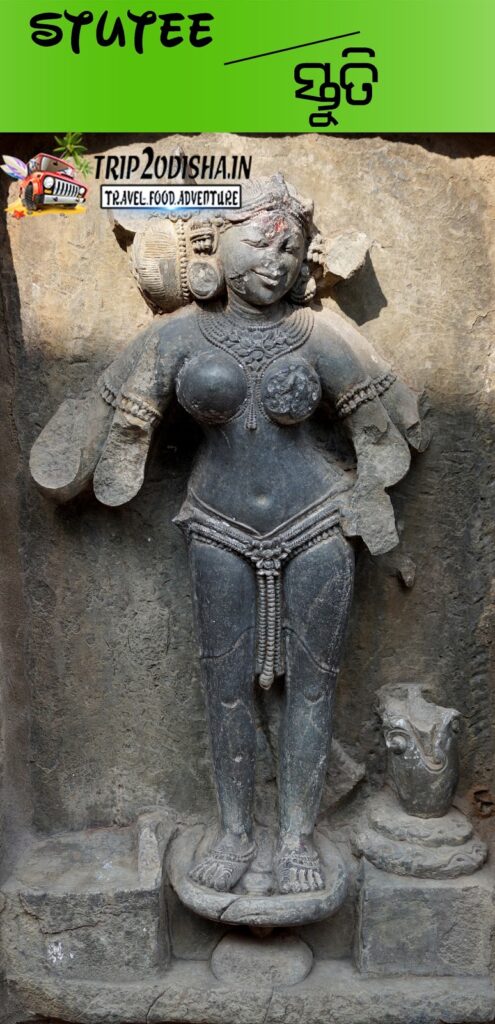
Yogini No.45 (Name: Stutee)
A four armed figure mounting on a haladi kathua (pot for turmeric paste). There is also a flower vase on the pedestal. Braid of hair is to the right with flower garland adorned with various ornaments with mukuta. She is standing in a Samabhanga pose.
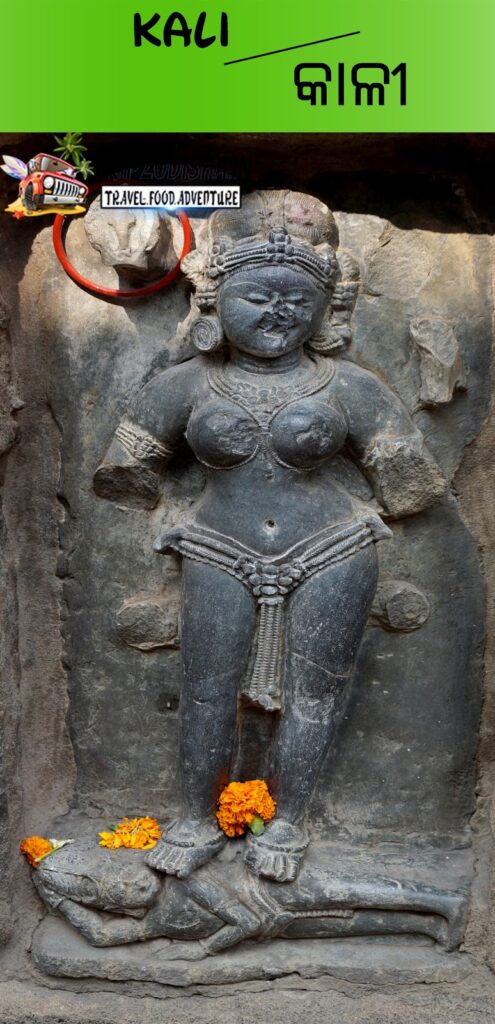
Yogini No.46 (Name: Kali)
Two armed figure mounting on a male body. She holds a trident. The male figure is with mukuta and kirita on his hand with third eye identified to be lord Siva. Braid of hair is standing in a dvibhanga pose.
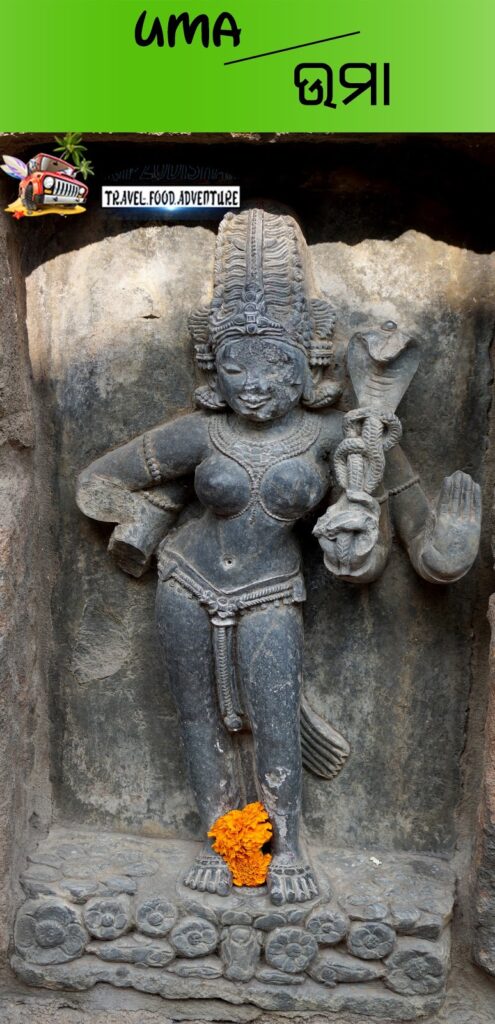
Yogini No.47 (Name: Uma)
Four armed graceful figure with mukuta and kirita or jata mukuta over her head. She holds a naga pasha in her upper left hand and her lower left arm is in abhaya mudra. Lotus flowers are there as her mount.
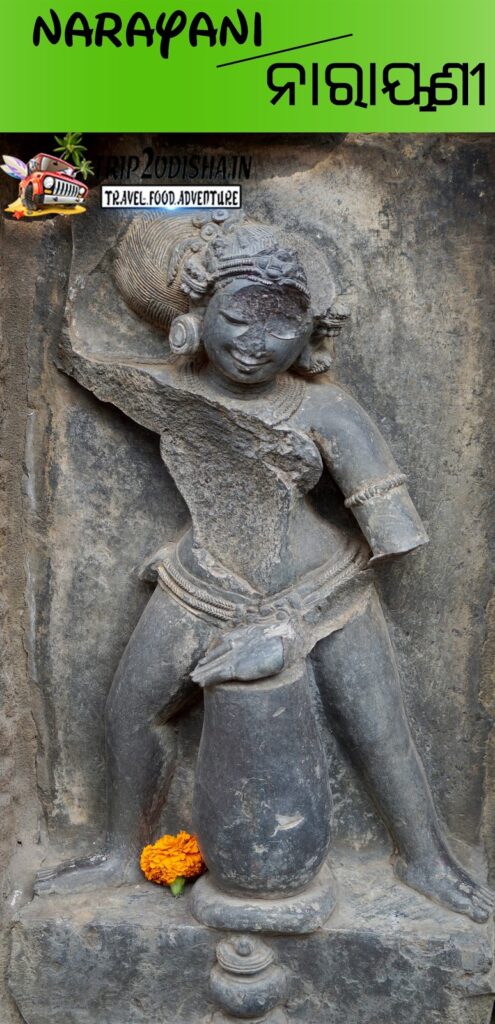
Yogini No.48 (Name: Narayani)
A two armed graceful figure. She keeps her left hand upon a madya bhanda (wine leg) and holds a sword in her right hand. She wears a tiara on her head and various ornaments on her body. The hair style is a kesa-bandha. In the pedestal there in an earthen pot with a conical lid.

Yogini No.49 (Name: Samudra)
Two armed figure with braid of hair to the left of her head. There is a tiara on her head and various ornaments on her body. The pedestal is having a conch shell with two legs as the mount. She standing in a dvibhanga poses.
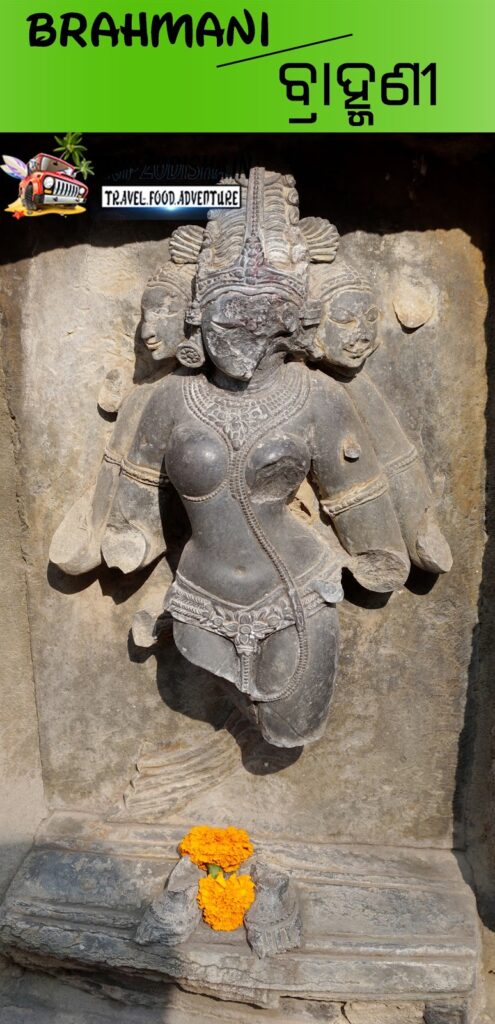
Yogini No.50 (Name: Brahmani)
Four armed and three faced figure. There are kirita and mukuta or jata mukuta over her head. The sacred thread, along-with various ornaments, adorn her body. At the left end of the pedestal a decorative lion is carved with beads in its mouth. The mount is a book.
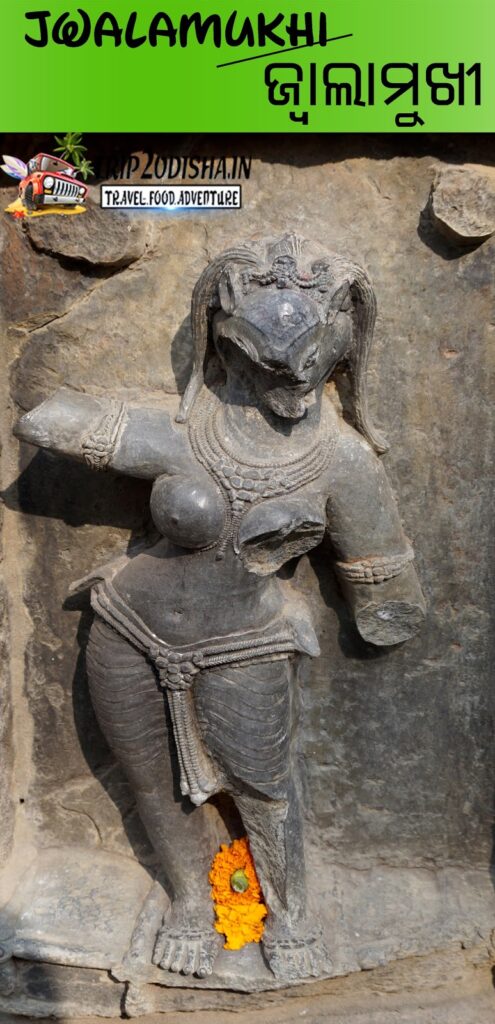
Yogini No.51 (Name: Jwalamukhi)
A two armed figure mounted on a platform with eight legs. Her ears are raised and quite long. Two long knots of matted hair are hanging on both sides of her head. She stands in a dvibhanga pose.
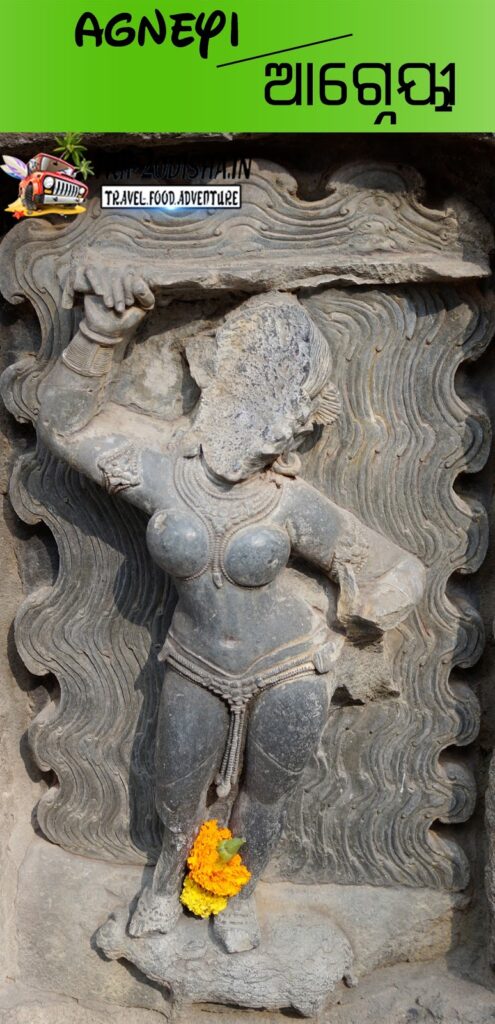
Yogini No.52 (Name: Agneyi)
Two armed figure mounted on a Sam. There is a sword in the raised rightly hand. She is adorned with various ornaments. The flame of fire is seen surrounding her.
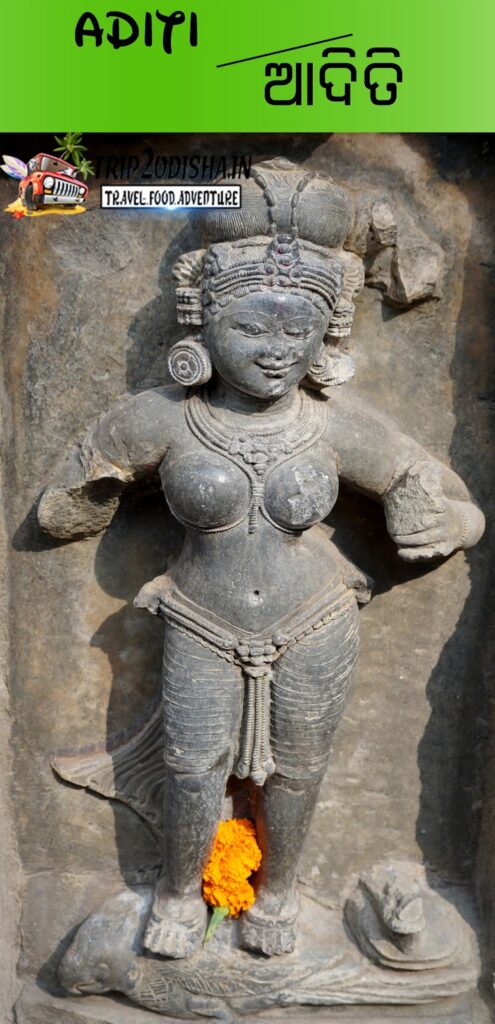
Yogini No.53 (Name: Aditi)
Two armed with braid of hair over her hand i.e. chignon on the top. There is a parrot on the pedestal as the mount or bahana. She stands in a Samabhanga pose.
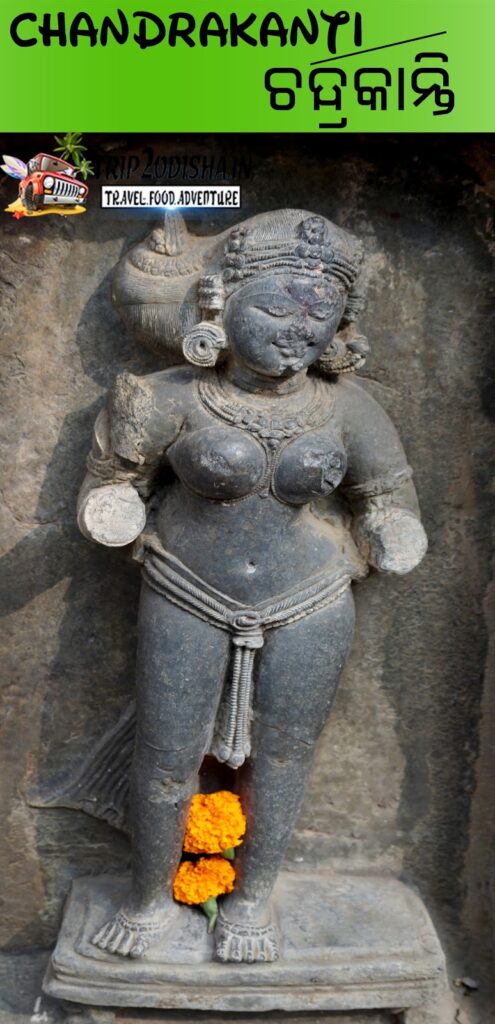
Yogini No.54 (Name: Chandrakanti)
Two armed figure, mounted on wooden cot with four legs. Braid of hair, kesa bandha is to the right of her head. She wears various ornaments. She stands in a dvibhanga pose.
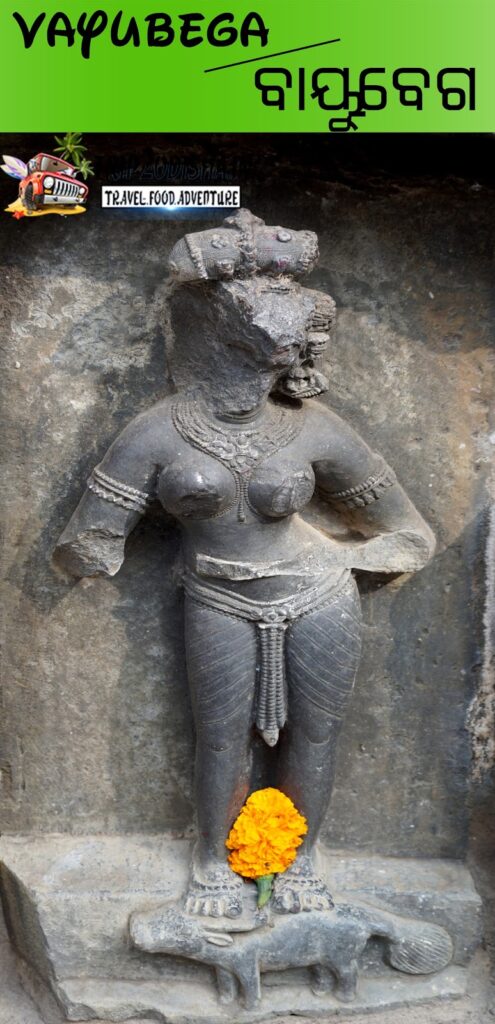
Yogini No.55 (Name: Vayubega)
Two armed graceful figure. Quite beautiful braid of hair or chignon is over her head. A female yak is seen on the pedestal as her mount. She is adorned with various ornaments. She stands in a dvibhanga pose.
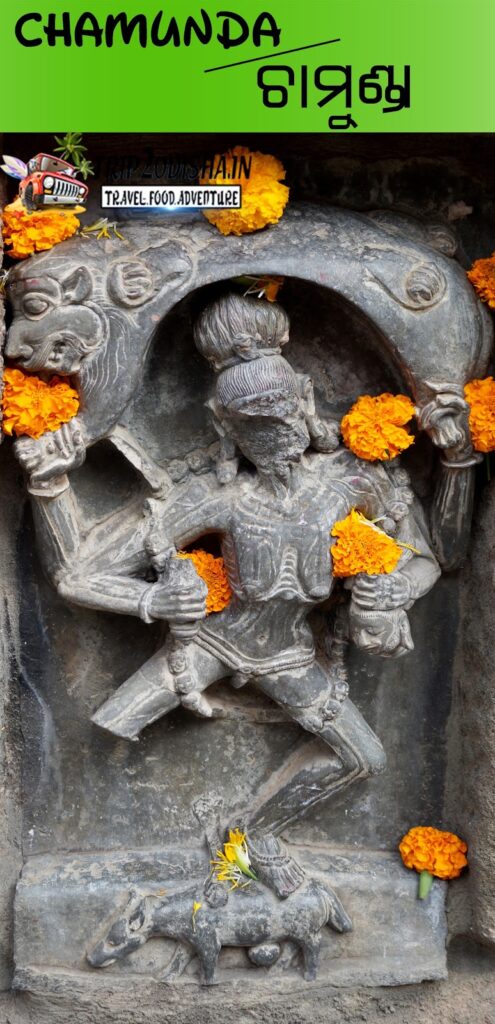
Yogini No.56 (Name: Chamunda)
A four armed awe-inspiring figure. The body is skeletal on with lean dangling breasts. Her hair is raised over her head. She is wearing a garland of skulls. With the upper two hands she holds a lion hide over her head. In the lower two hands she holds a Katari and a severed human head. In the pedestal there is the figure of a musk deer as the mount. She stands in a tribhanga dancing pose.
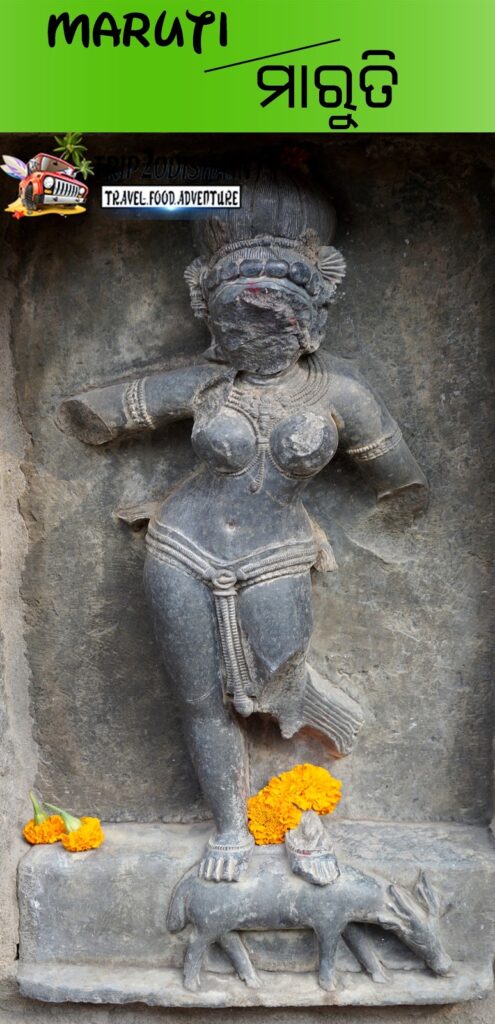
Yogini No.57 (Name: Maruti)
Two armed figure mounting on a horned deer and the braid of hair over her head like flames. Being adorned with various ornaments. She stands in a tribhanga pose.
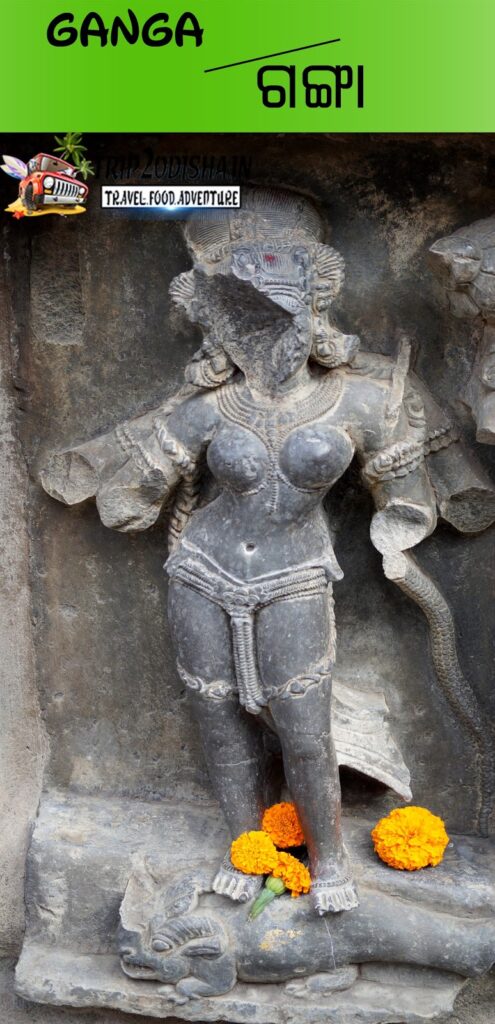
Yogini No.58 (Name: Ganga)
A four armed figure standing upon the back of a ‘Makara’, with the braid of hair over her head i.e. chignon on top. She is adorned with various ornaments. She holds the petiole of a full-blown lotus in her upper right hand and a Naga-pasa in her lower left. She is standing in a tribhanga pose.
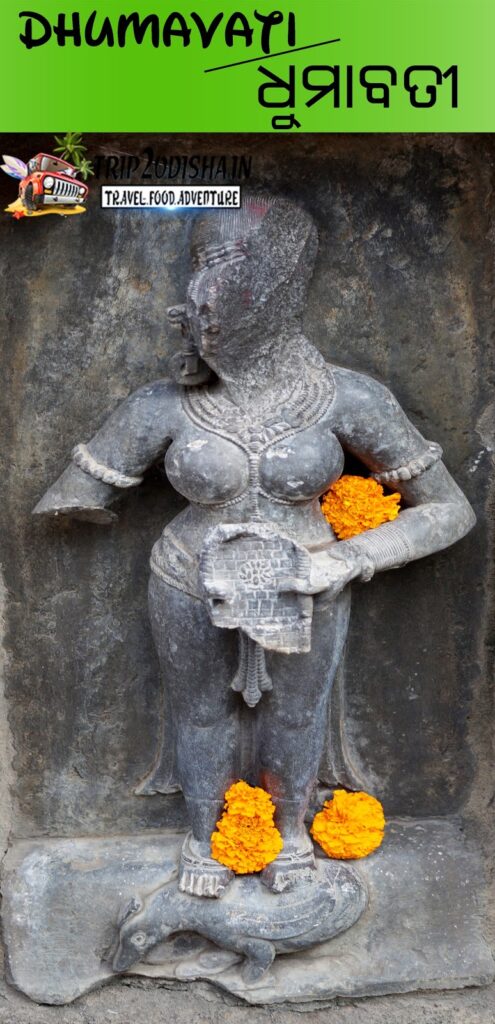
Yogini No.59 (Name: Dhumabati)
Two armed figure mounted on a duck. Braid of hair over her head. She holds a winnoing fan in both of her hands. She stands in a Samabhanga pose.
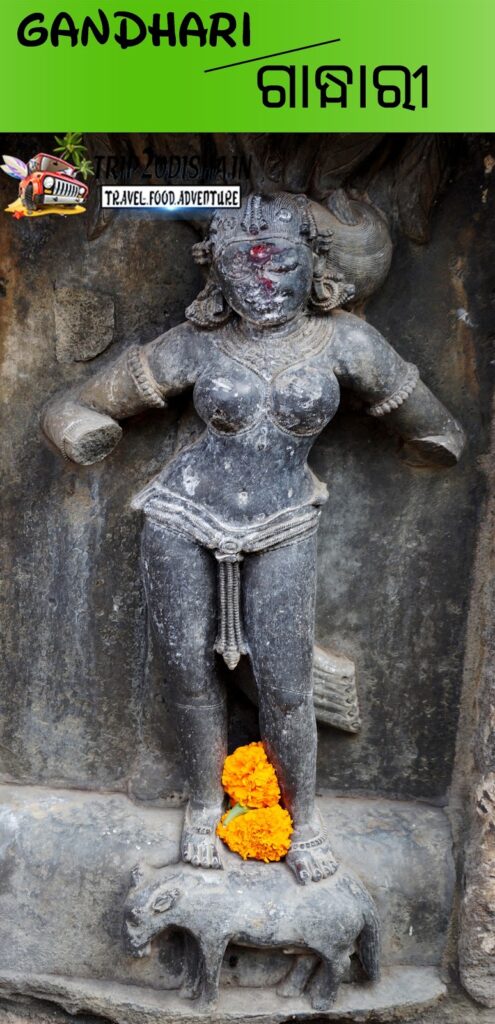
Yogini No.60 (Name: Gandhari)
Two armed figure mounting on a horse. Braid of hair is to the left of her head. In the background there is a Kadmba tree. She stands in a Samabhanga pose.

Yogini No.61 (Name: Sarva Mangala)
Her niche is empty. It is believed that the figure of Sarva Mangala was housed here. Here after her removal the niche is empty. Some say that the said yogini has been removed to Yamuna kuda a nearby place of river Kuakhai. But the Iconographic study of the image at Yamuna Kuda does not support the statement.
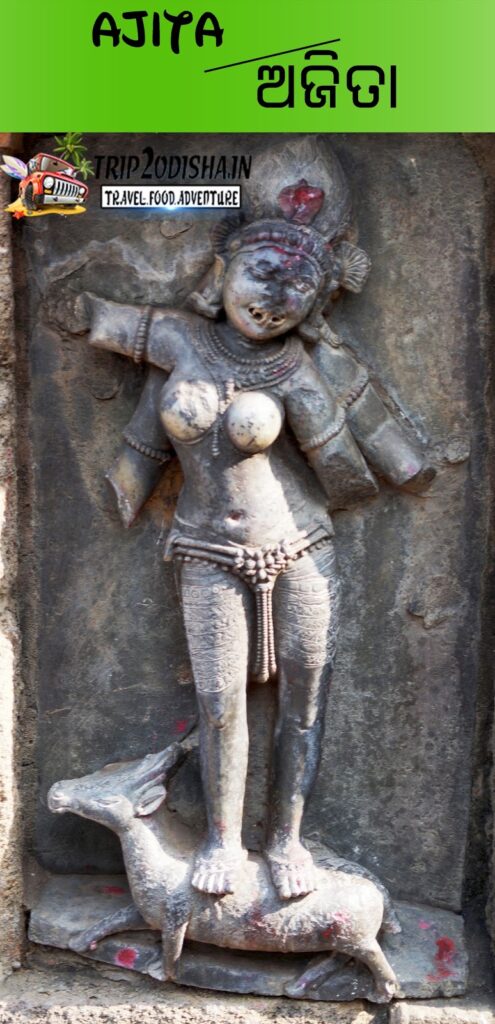
Yogini No.62 (Name: Ajita)
Four armed figure with a dancing pose. Braid of hair over her head which looks flame like. There is a stage on the pedestal as the mount. She stands in a tribhanga pose.
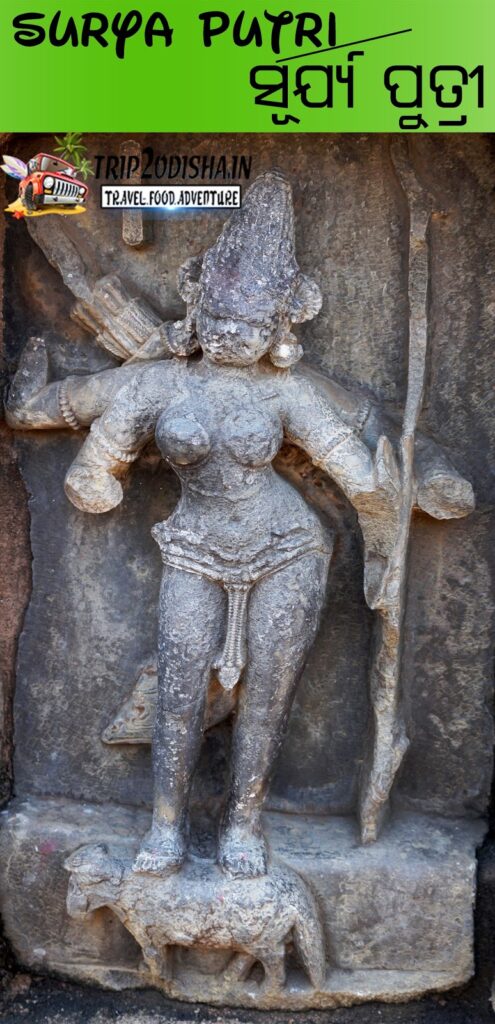
Yogini No.63 (Name: Suryaputri)
She is a four armed figure and quite graceful in appearance. She is mounting on a galloping horse. There is kirita over the head and various ornaments in the body. She holds a bow and arrow with a quiver and is seen plucking arrone from quiver.
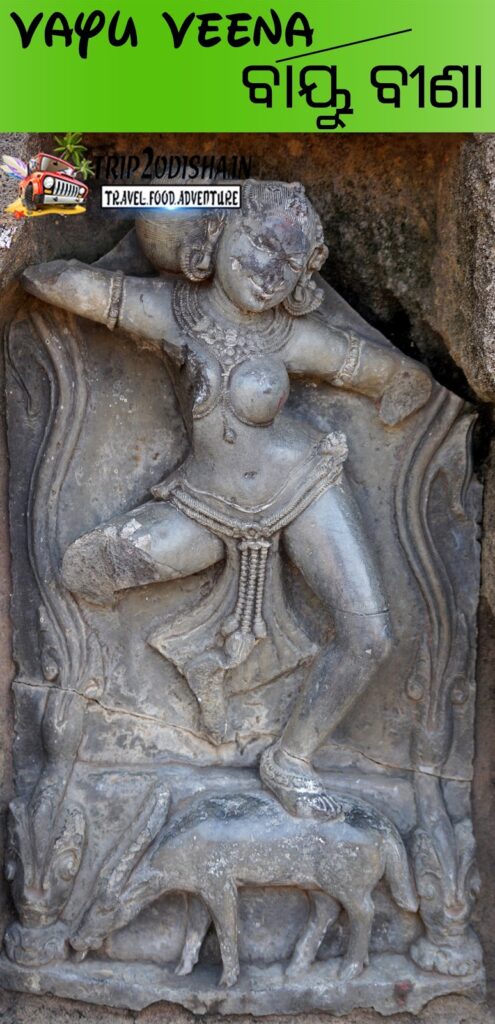
Yogini No.64 (Name: Vayu Veena)
Two armed figure with a dancing pose. Braid of hair to the right of her head. Adorned with various ornaments with indicate ear rings known as kappa. There is a black buck and two flower vases on the pedestal.
Every statue of a Yogini, even if it’s been worn down by the years, has its own unique personality and tale. Some look peaceful and caring, while others have fierce and battle-ready faces. Altogether, they represent the full range of feminine strength—from bringing life to causing chaos.
Here are some reasons to visit Chausathi Yogini Temple:
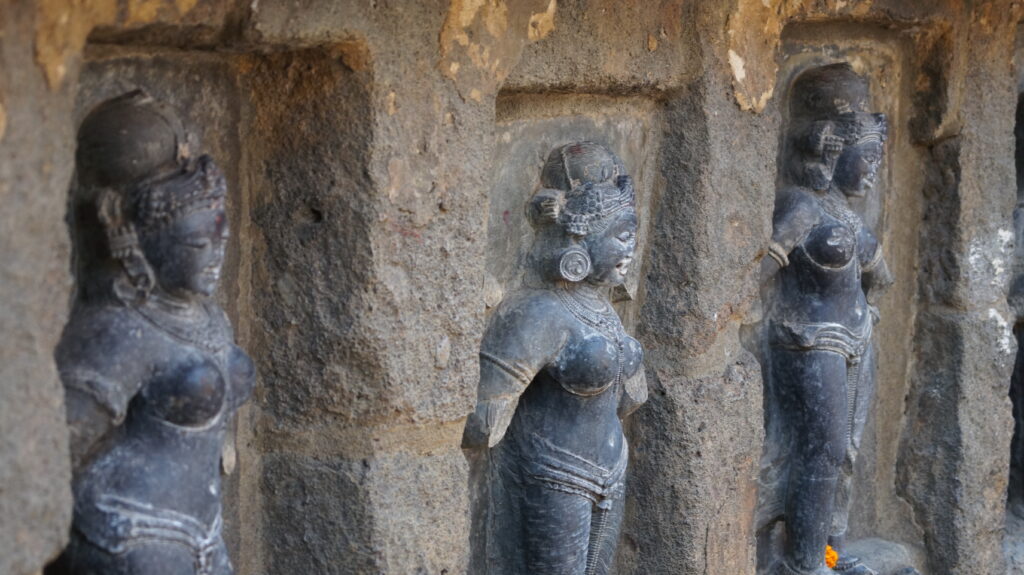
Spiritual Significance: The Chausathi Yogini Temple offers a glimpse into the ancient Tantric practices of India, where devotees connected with the cosmic feminine power.
Architectural Wonder: The circular, roofless structure of the temple is rare, with only a handful of similar temples found across the country.
Cultural Heritage: Built under the Bhauma-Kara dynasty, the temple stands as a testament to Odisha’s rich history of tantric worship and devotion to the divine feminine.
Additional Travel Tips
Best Time to Visit: The ideal time to visit is during the winter months (October to February) when the weather is pleasant.
Timings: The temple is open from 6:00 AM to 6:00 PM every day.
Entry Fee: There’s no entry fee, but donations are welcome.
FAQ :
1. How far is Hirapur Chausathi Yogini Temple from Bhubaneswar?
The temple is approximately 15 km from Bhubaneswar, around a 30-40 minute drive.
2. What’s the best way to reach the temple?
You can take a taxi, bus, or auto-rickshaw from Bhubaneswar. It’s easily accessible by road.
3. Are there other Chausathi Yogini temples in India?
Yes, there are other Yogini temples, notably in Odisha, Madhya Pradesh, and Uttar Pradesh, but the Hirapur temple is one of the best-preserved and most unique due to its architecture and history.
4. Is photography allowed inside the temple?
Yes, visitors are generally allowed to take photographs of the temple and its surroundings.
5. What should I wear when visiting the temple?
As with most temples in India, it’s respectful to dress modestly. Comfortable shoes are recommended as you may need to walk a bit from the parking area.
Enjoy the stunning photos and videos of Chausathi Yogini Temple on this page. We trust you will appreciate us.
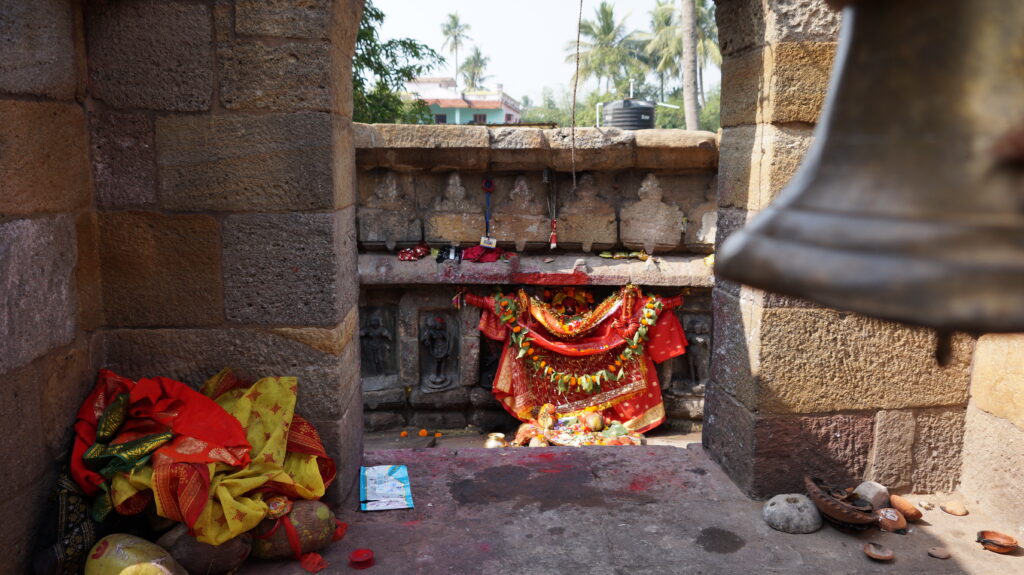
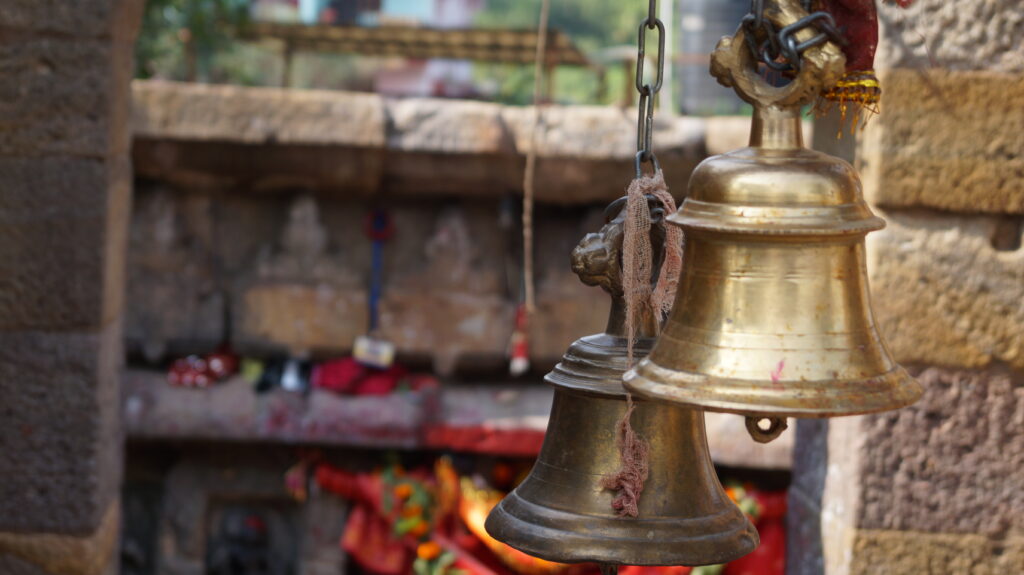
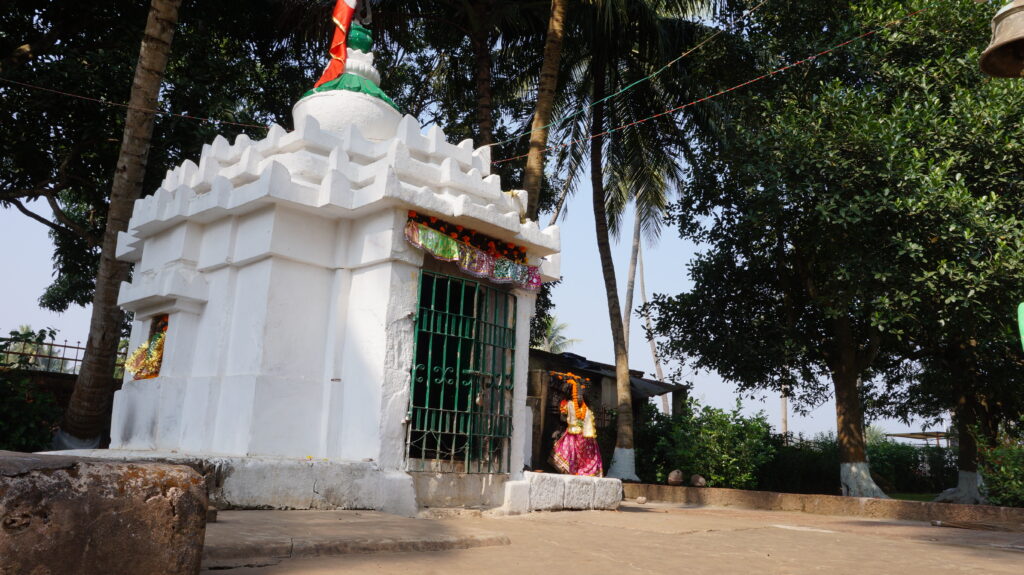
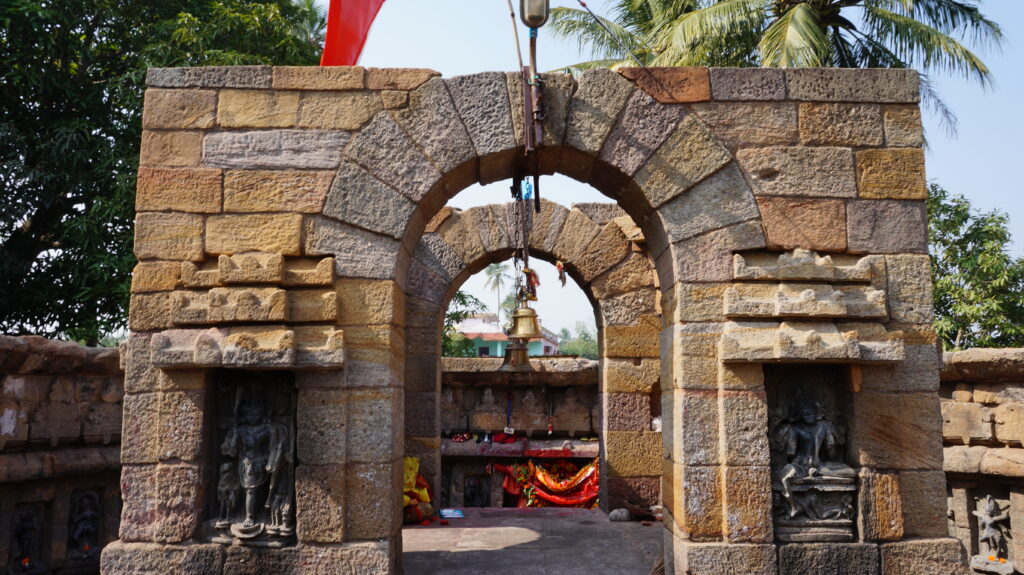




Watch our Video:

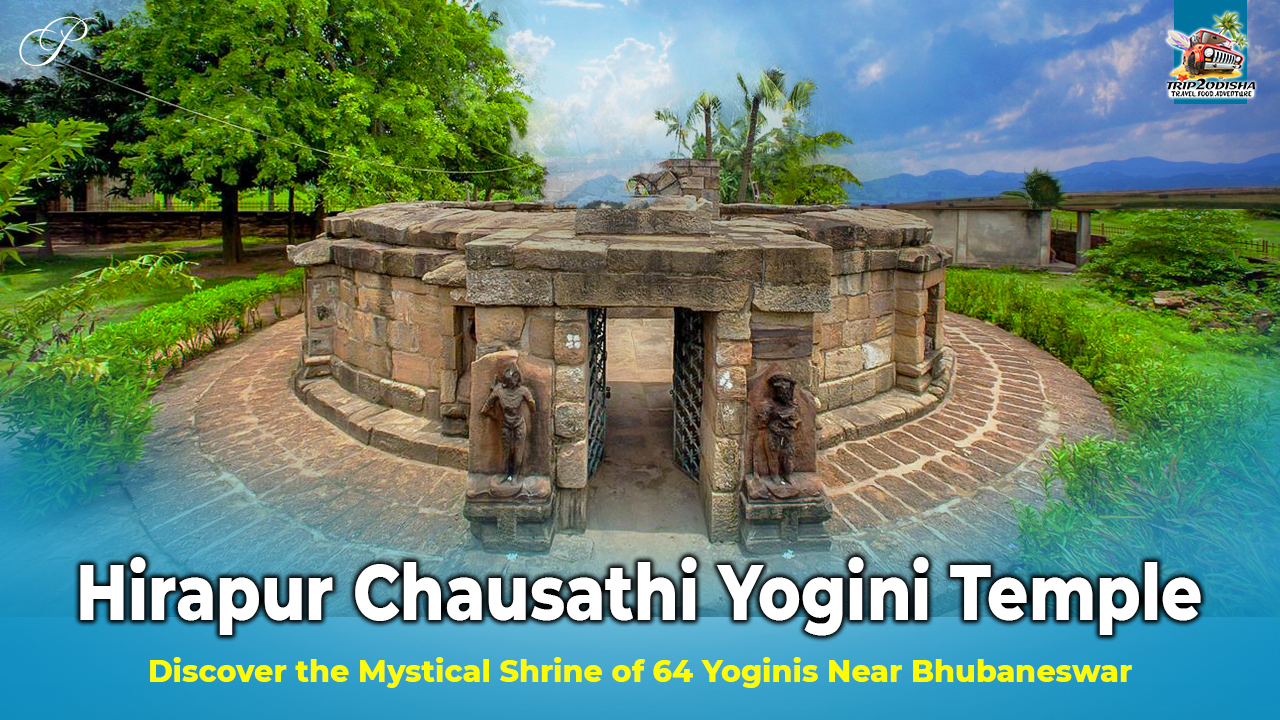


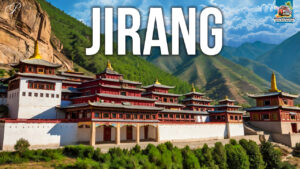
Your blog is a breath of fresh air in the often mundane world of online content. Your unique perspective and engaging writing style never fail to leave a lasting impression. Thank you for sharing your insights with us.
Bravo, what phrase…, a magnificent idea
Your phrase simply excellent
I recommend to everyone to visit this site on which there is a lot of information on Odisha tourist place.